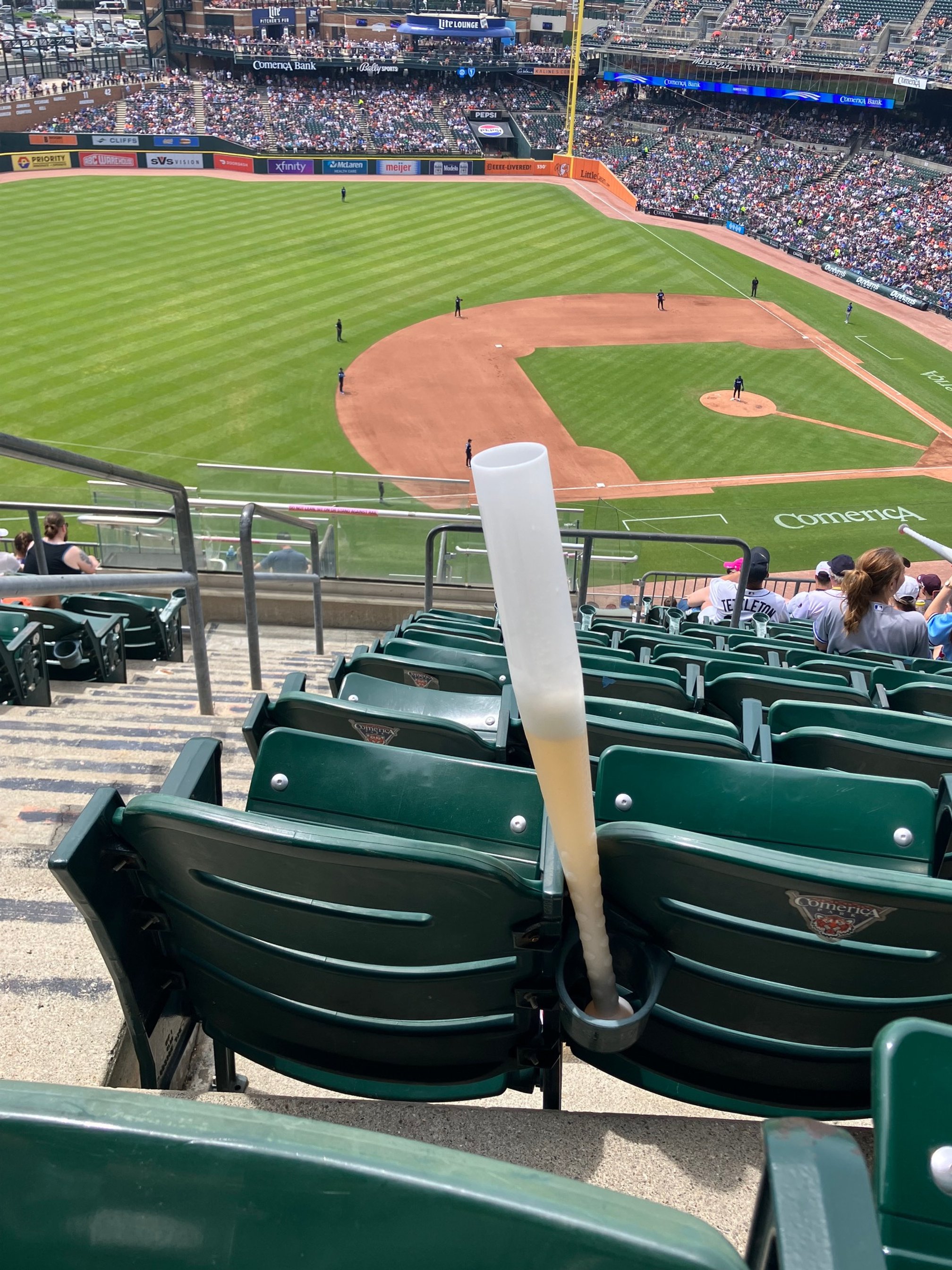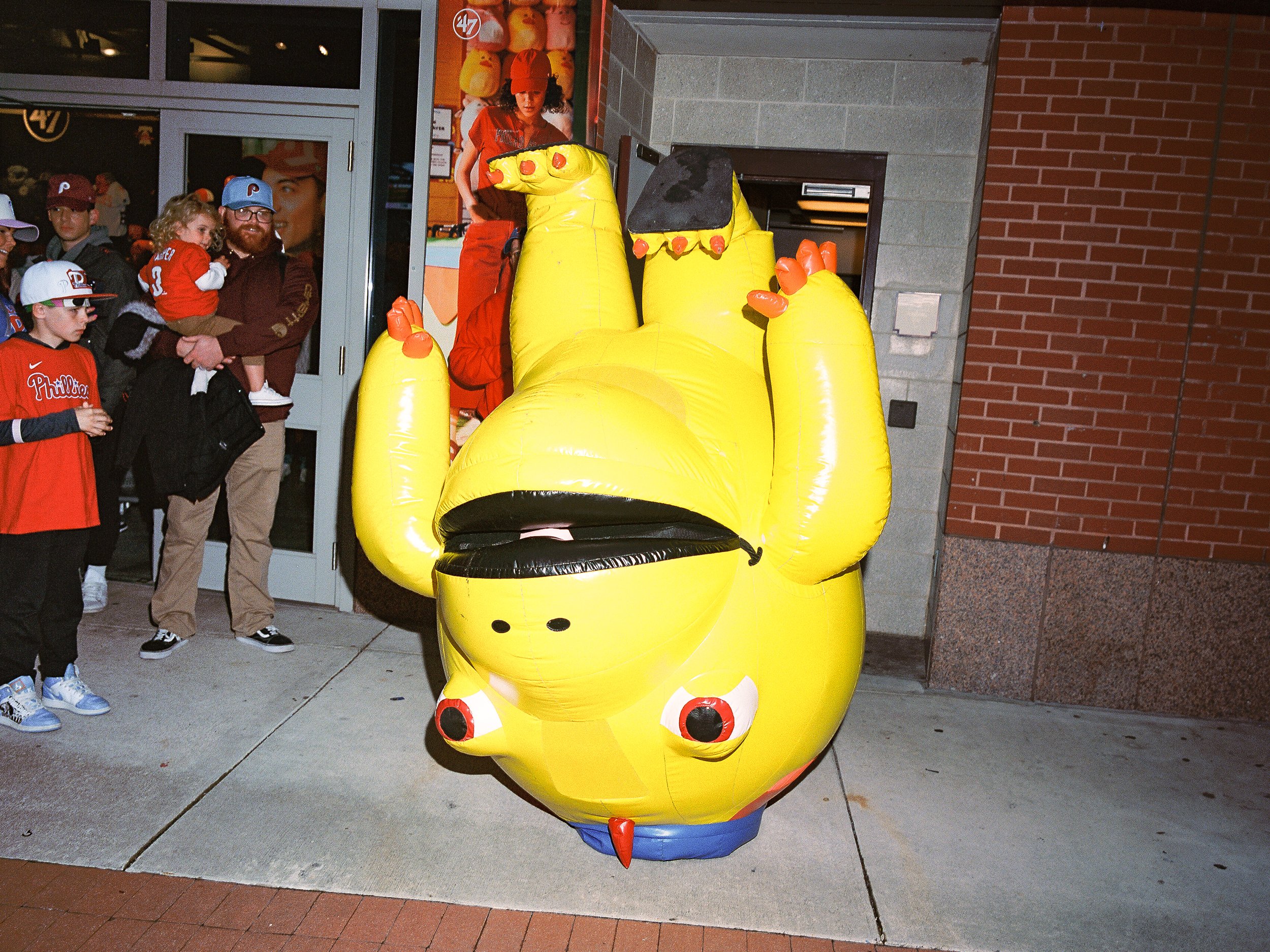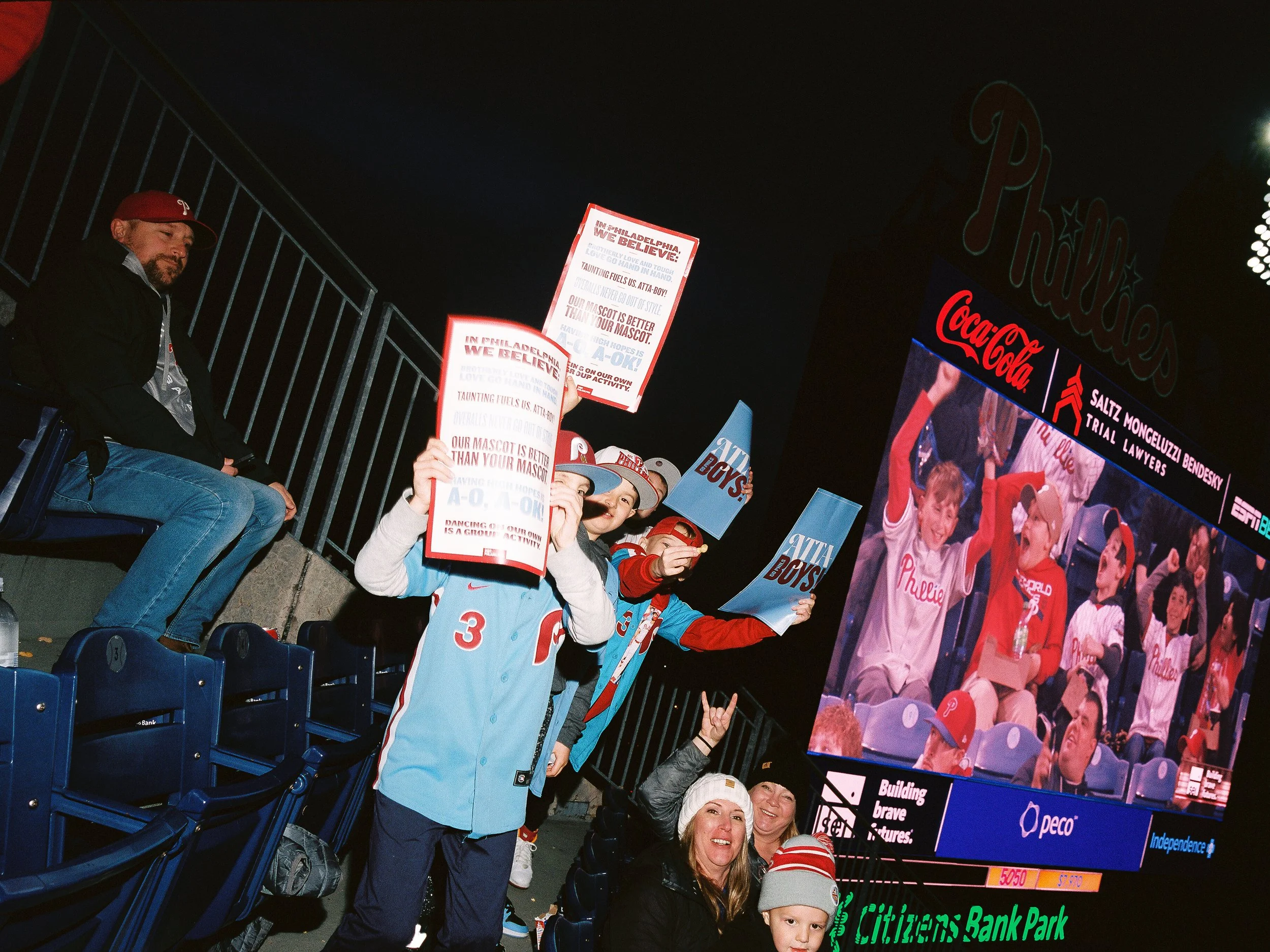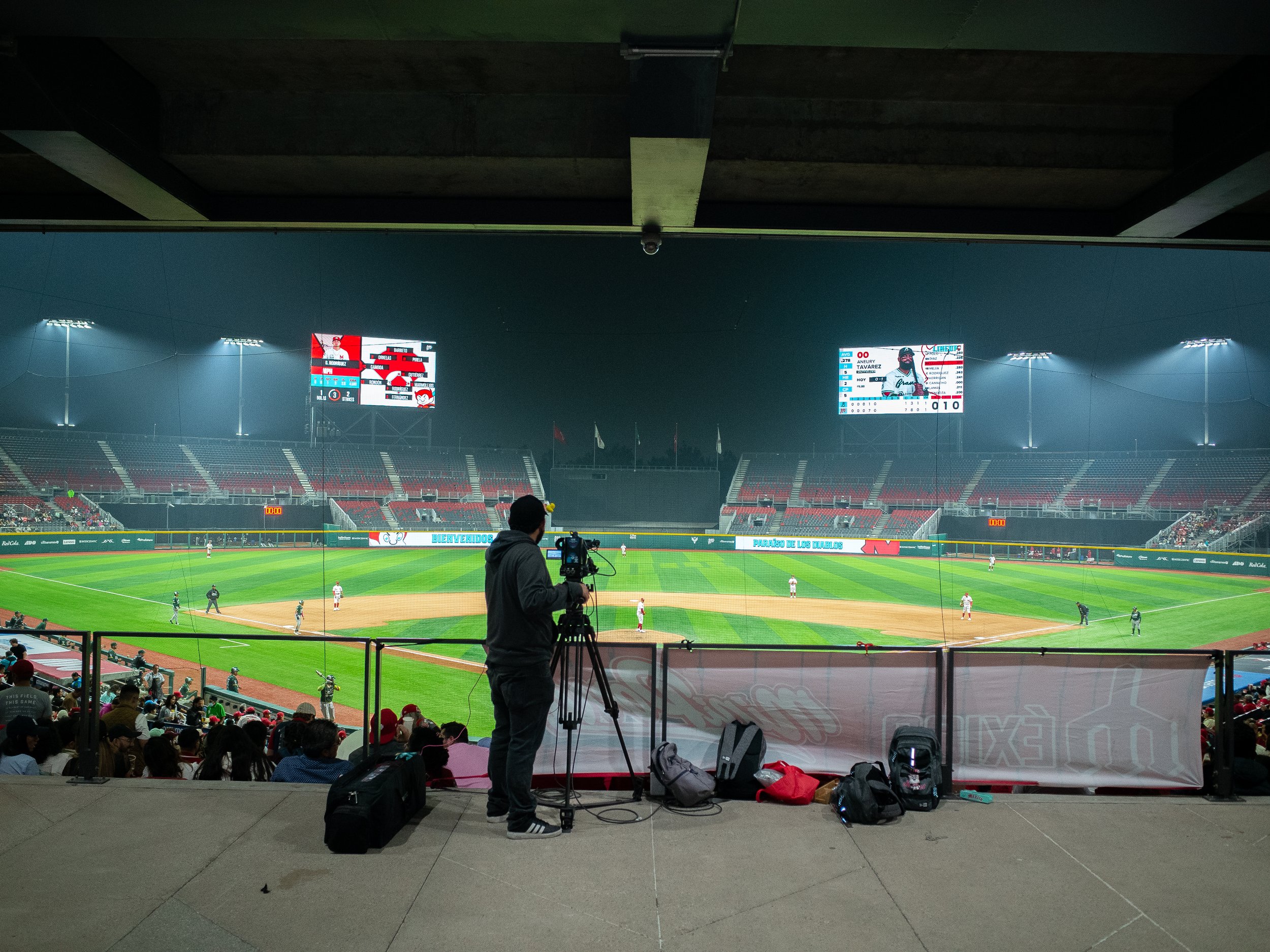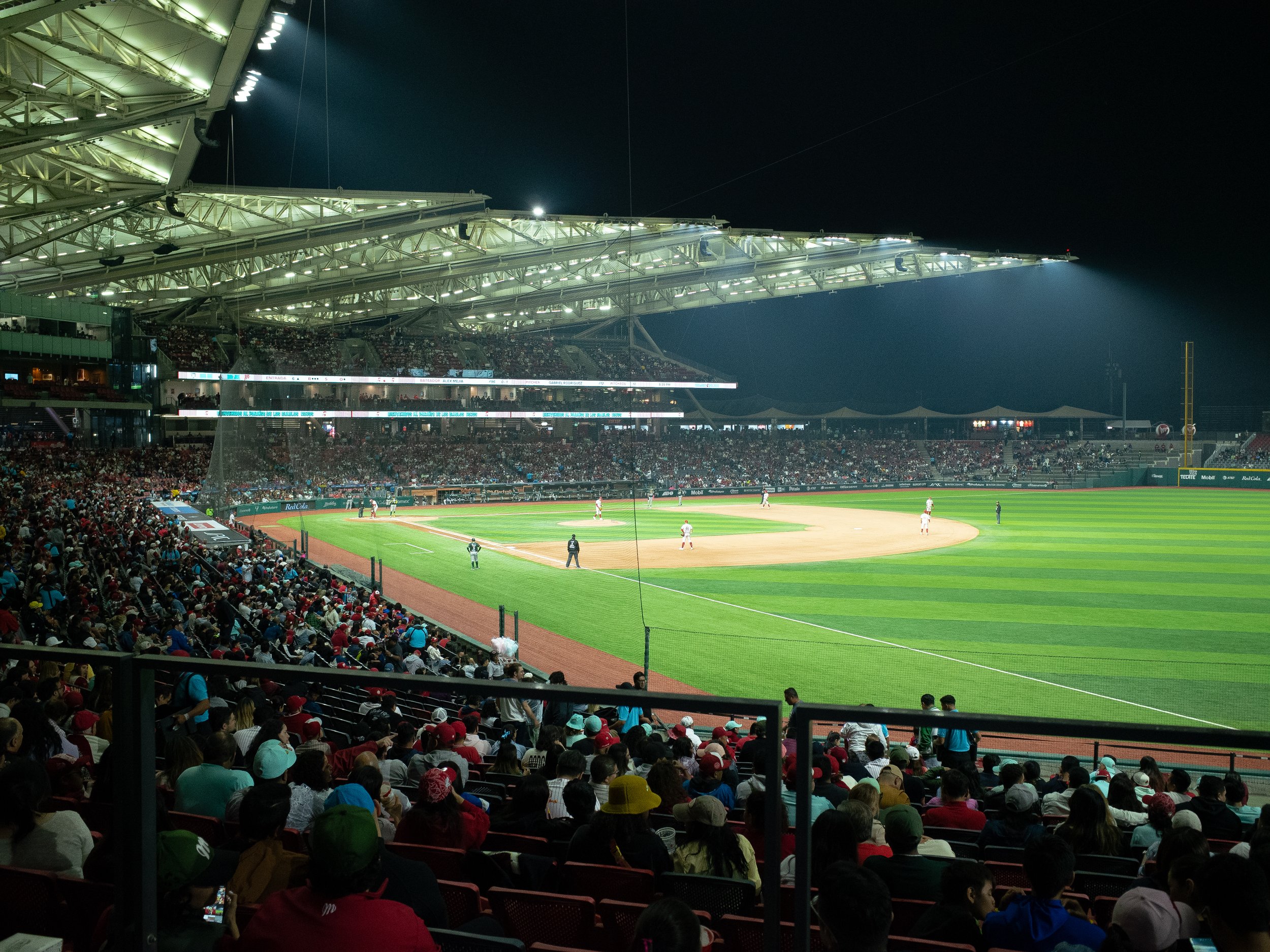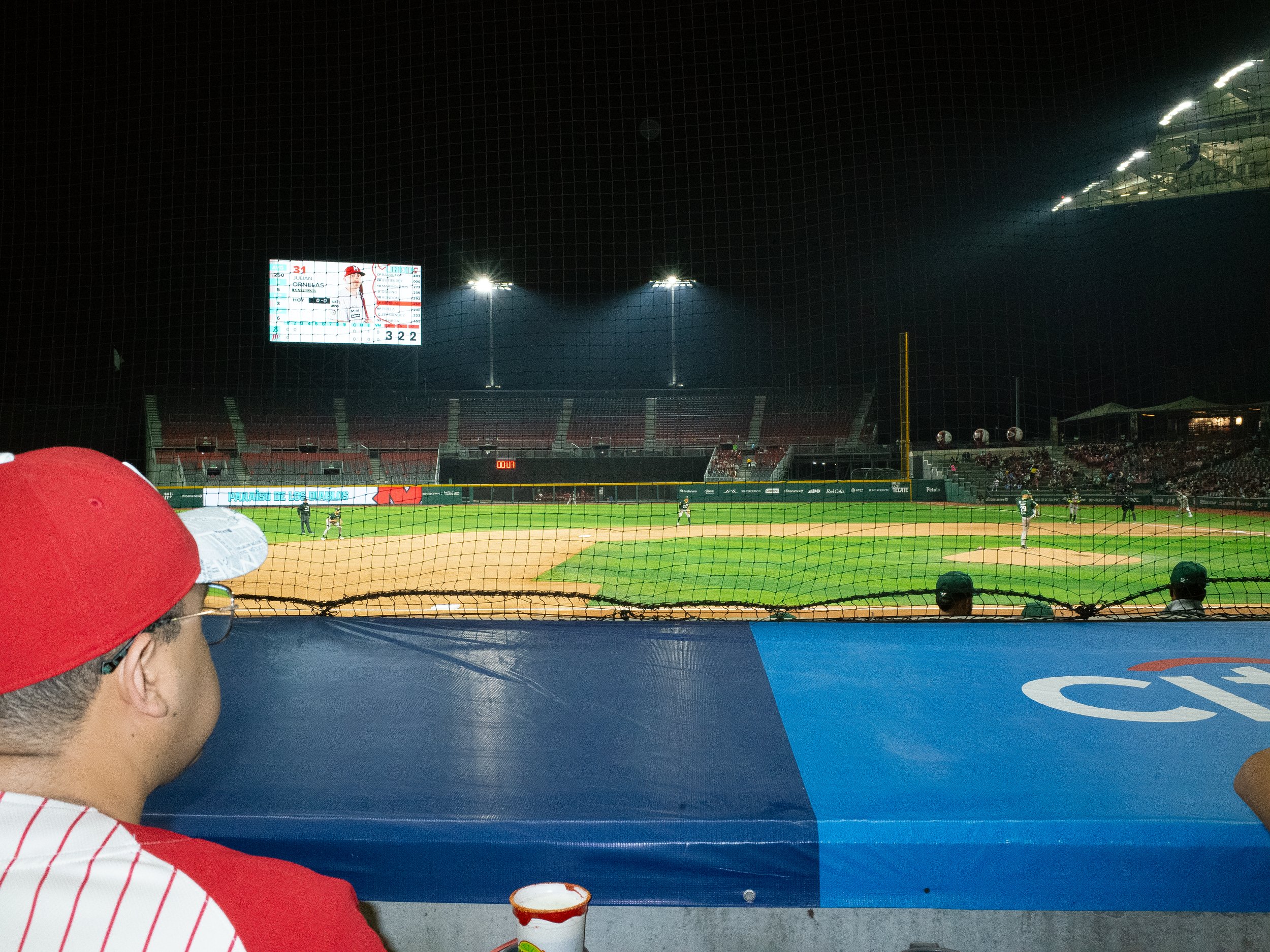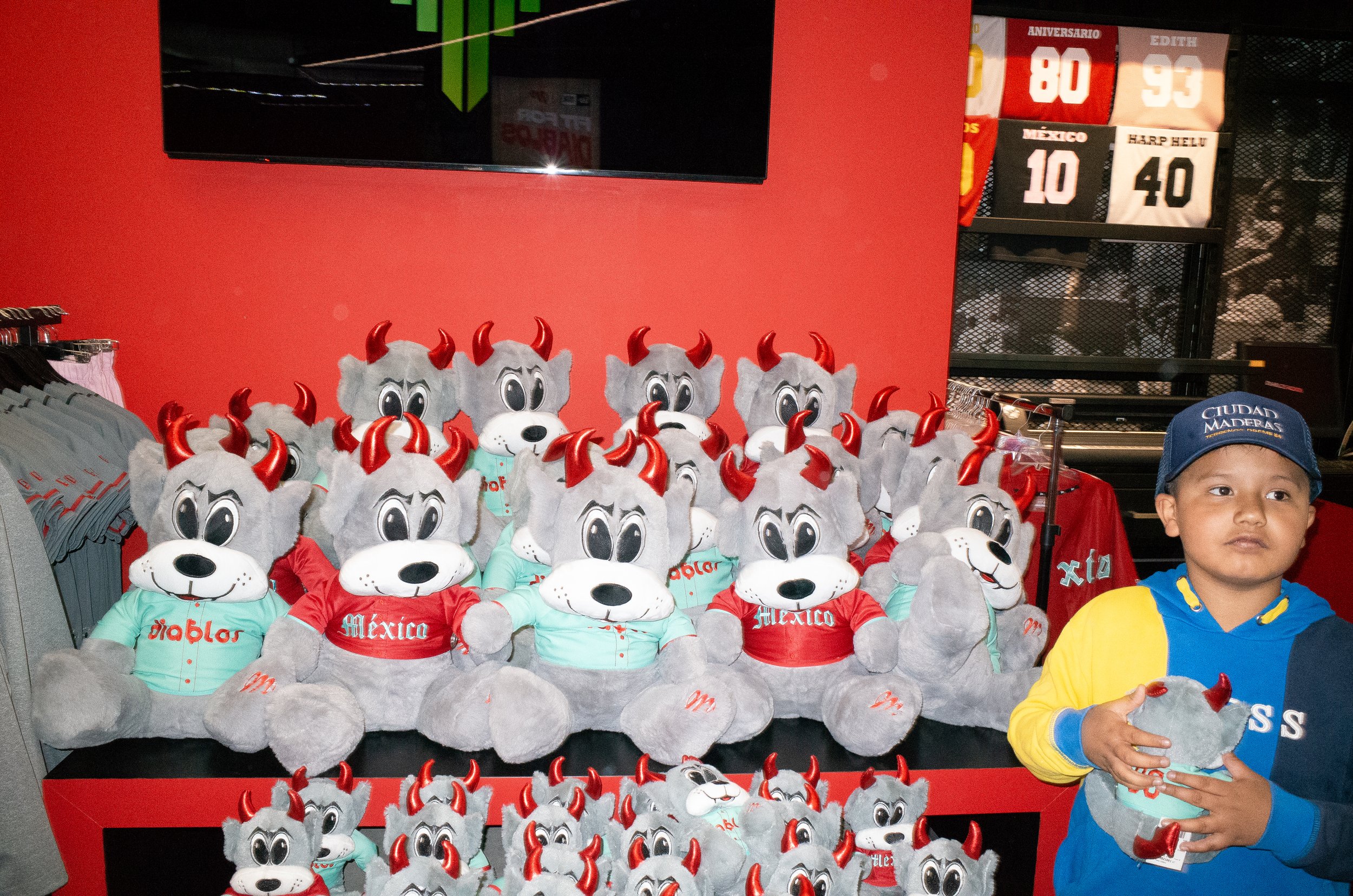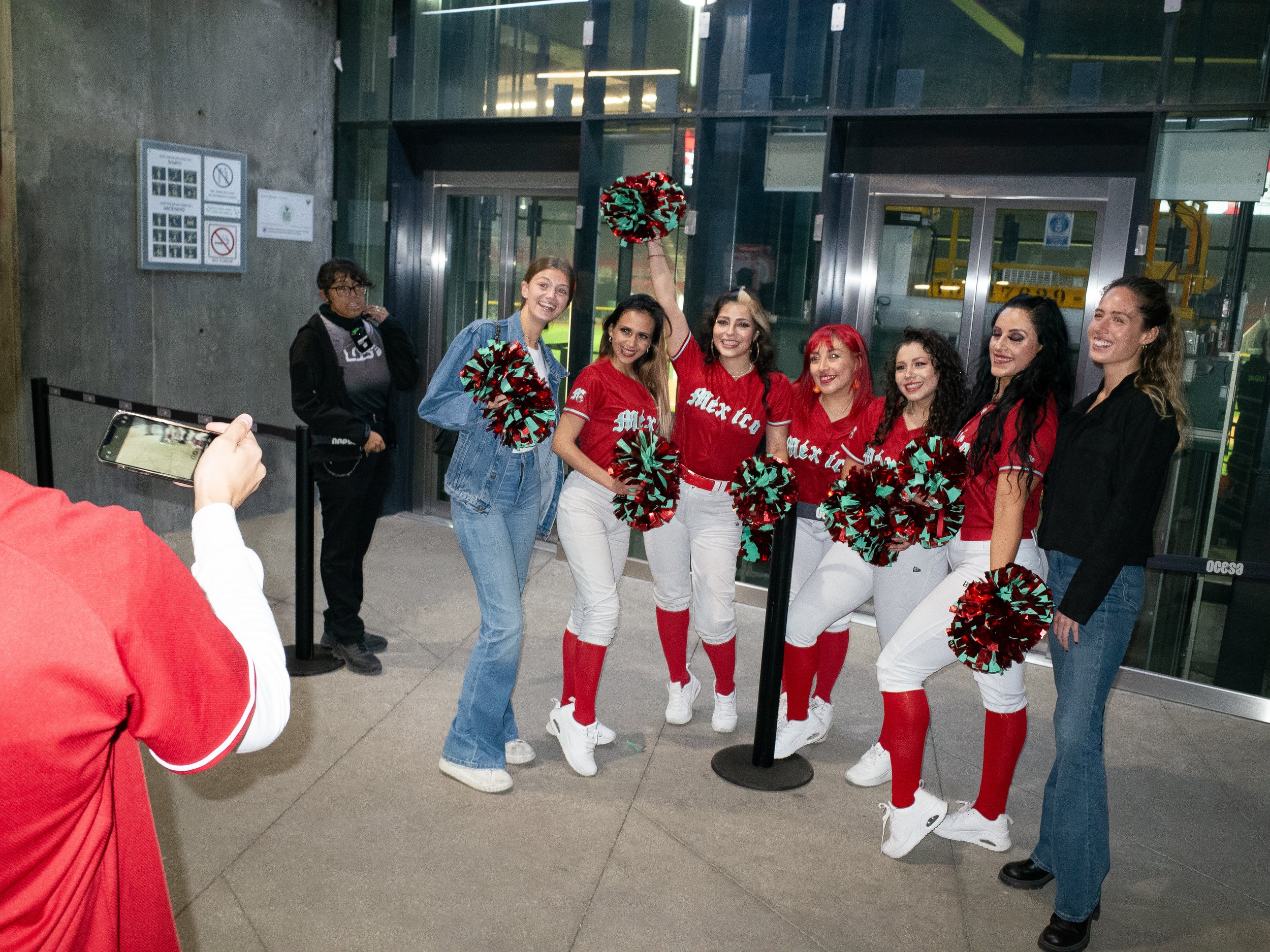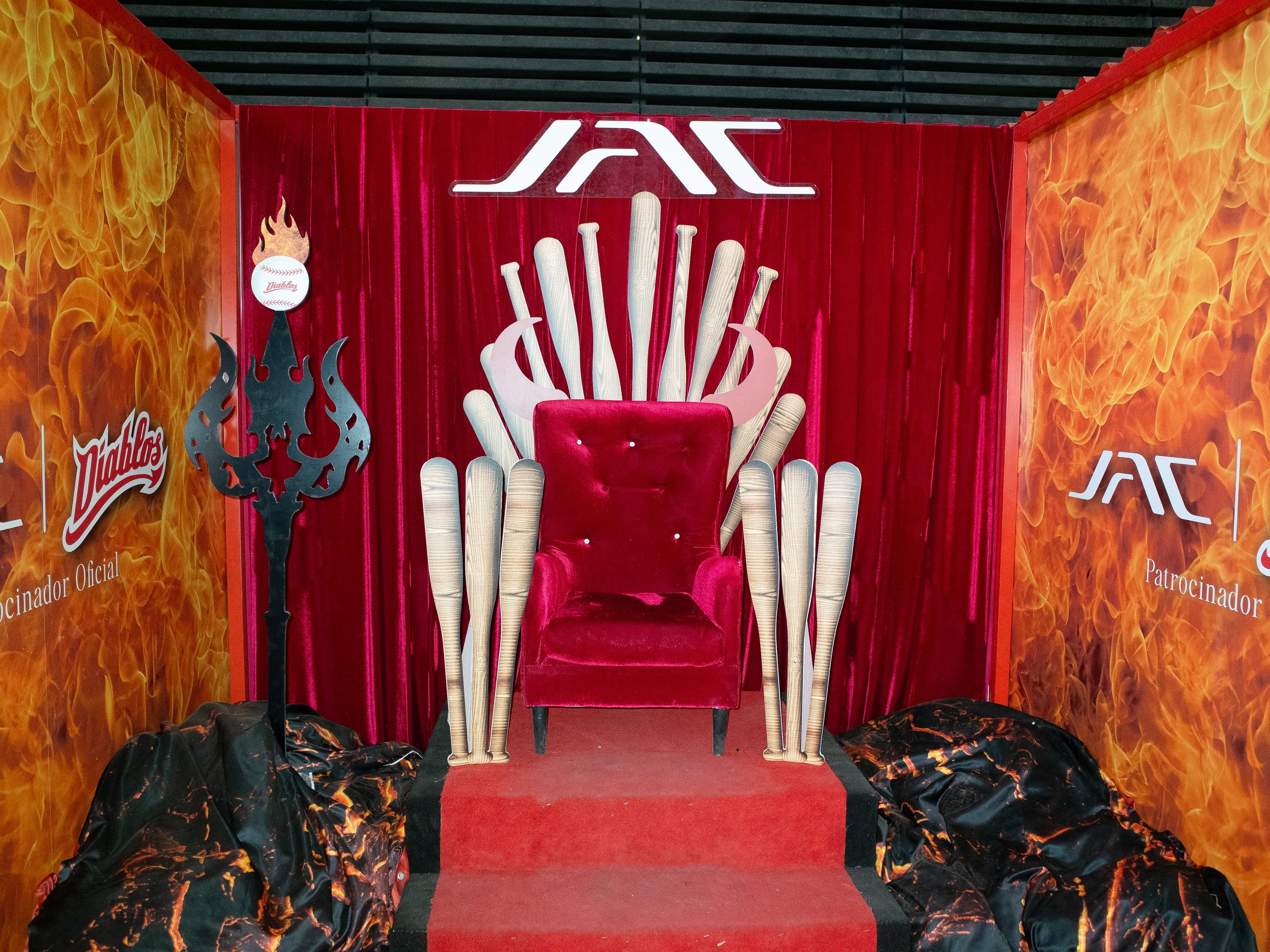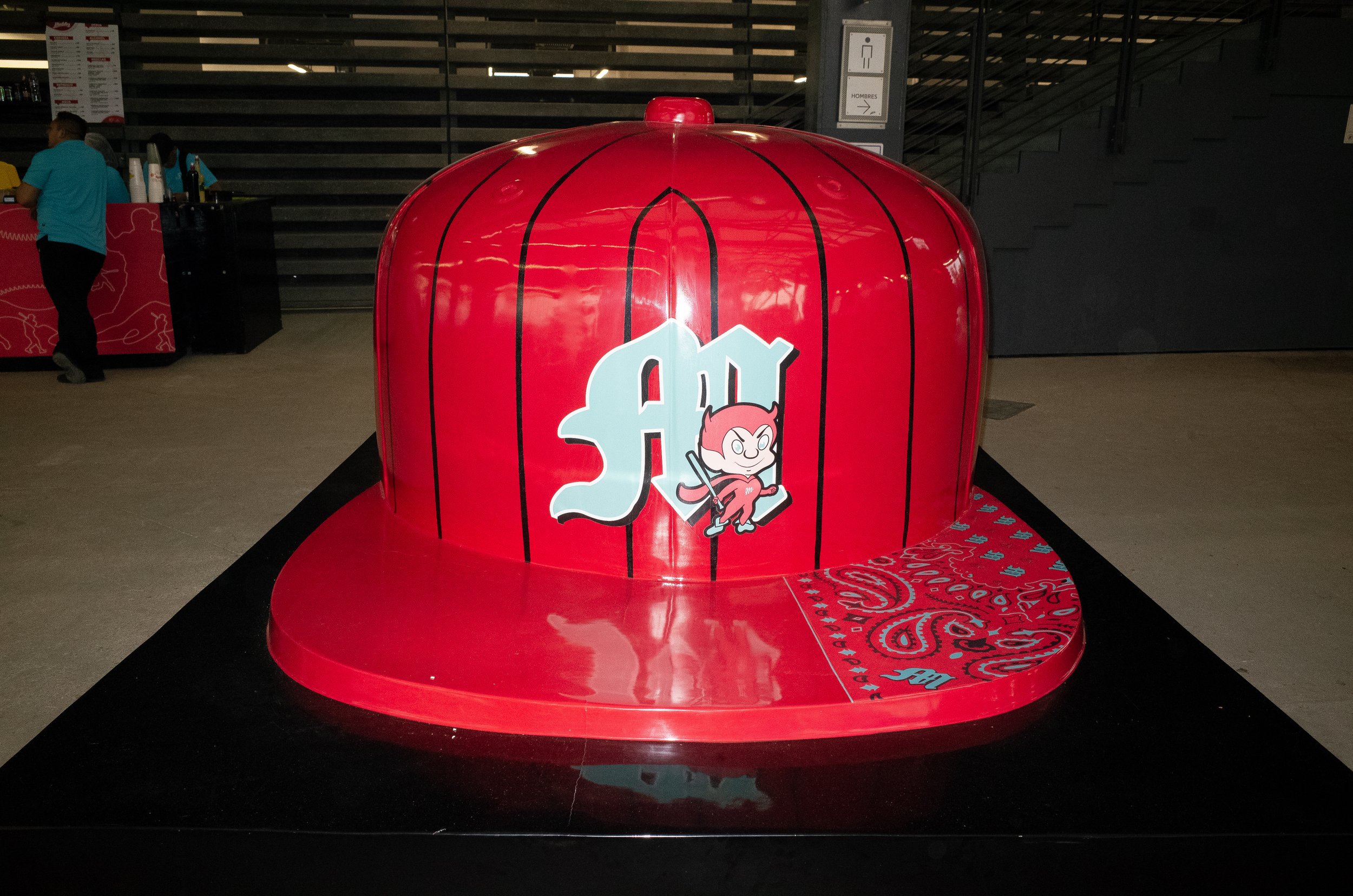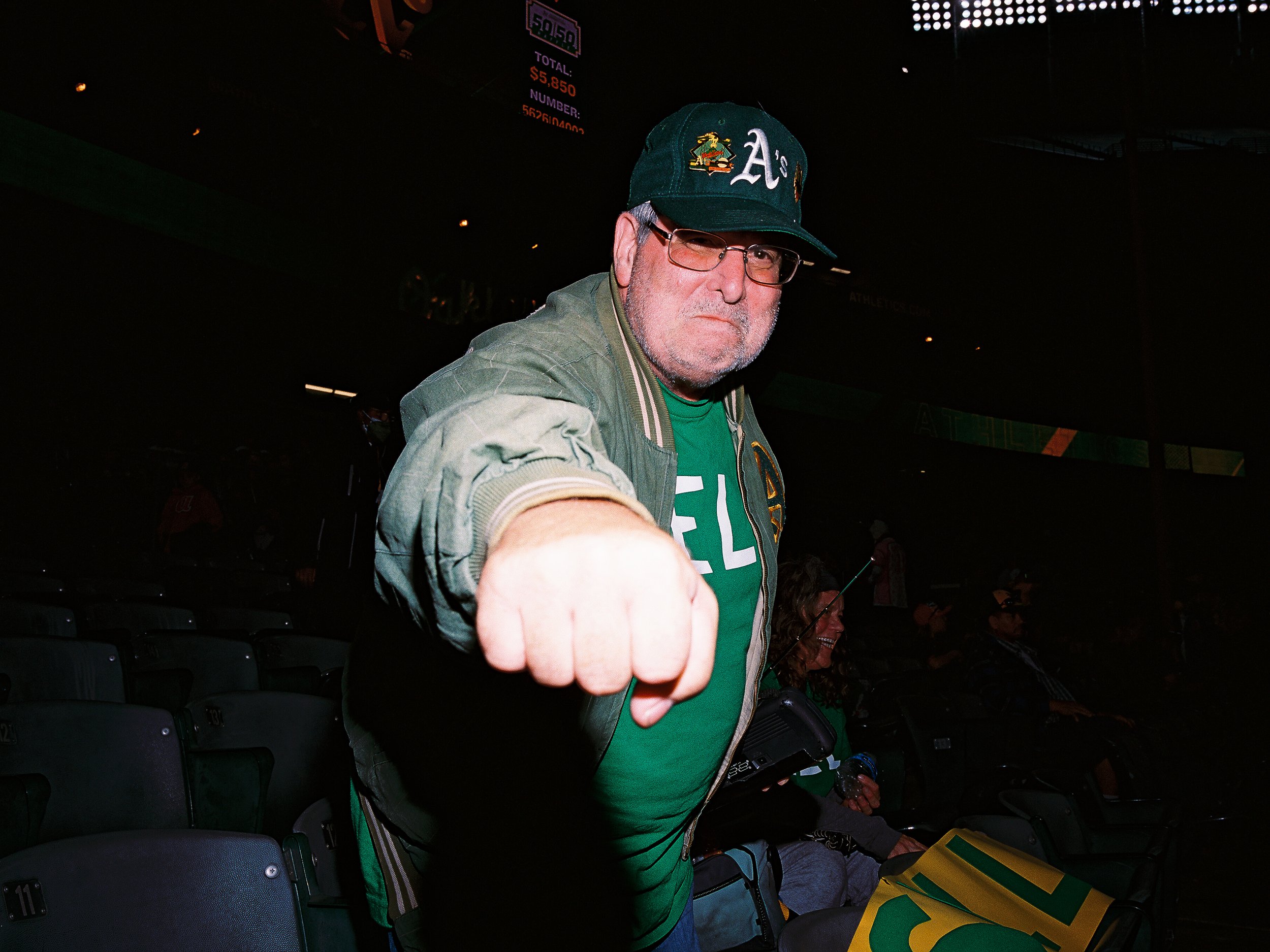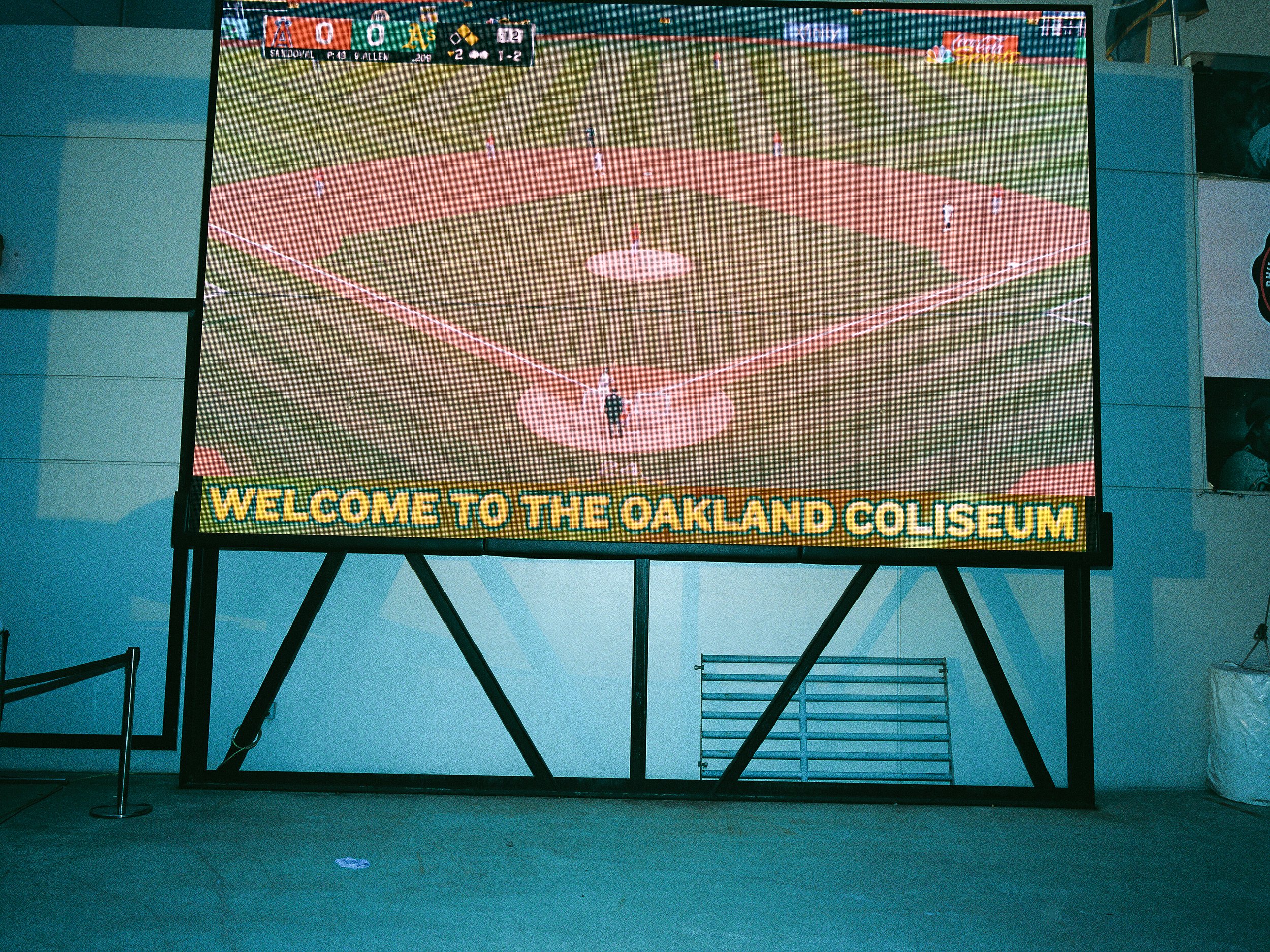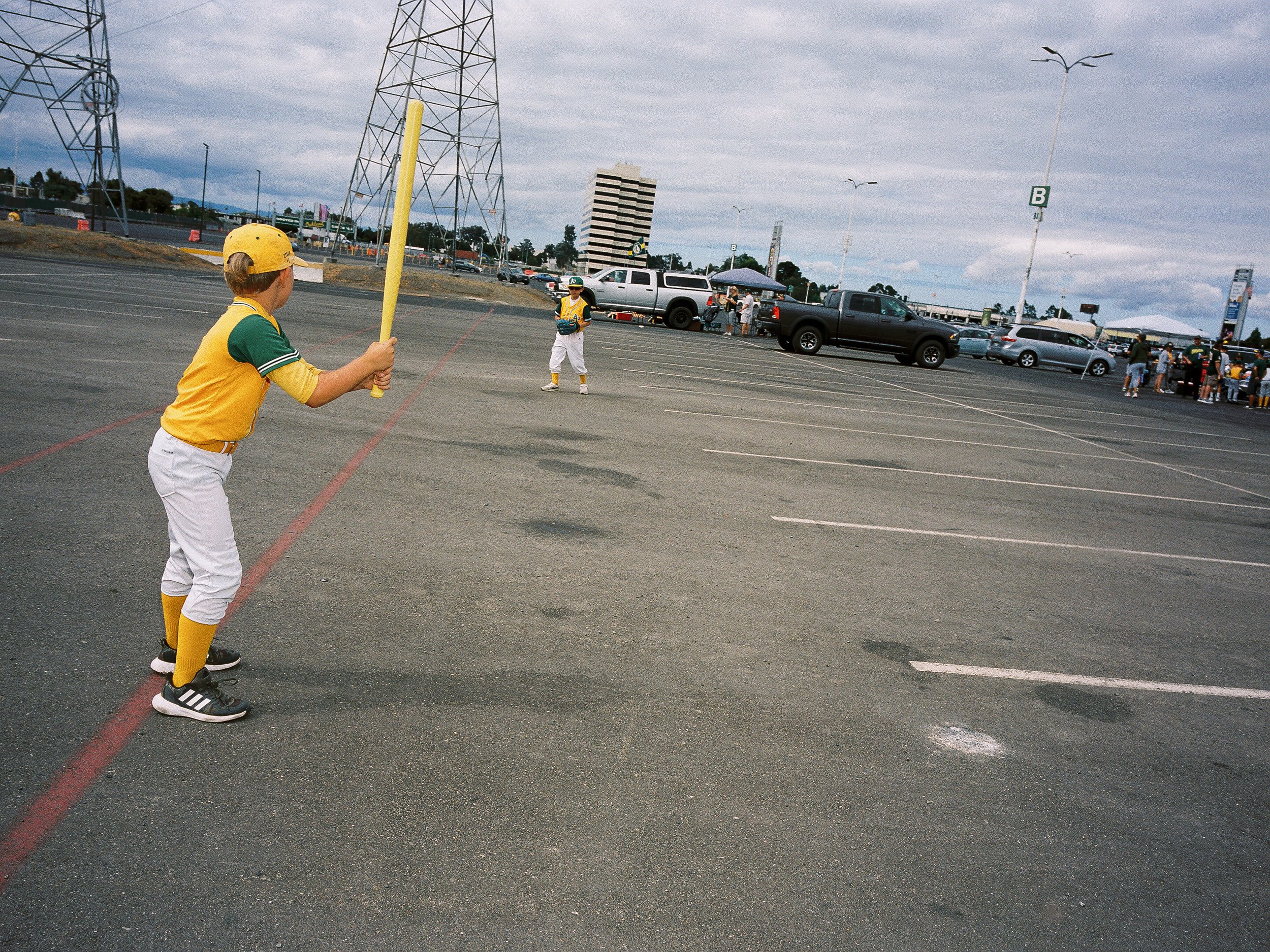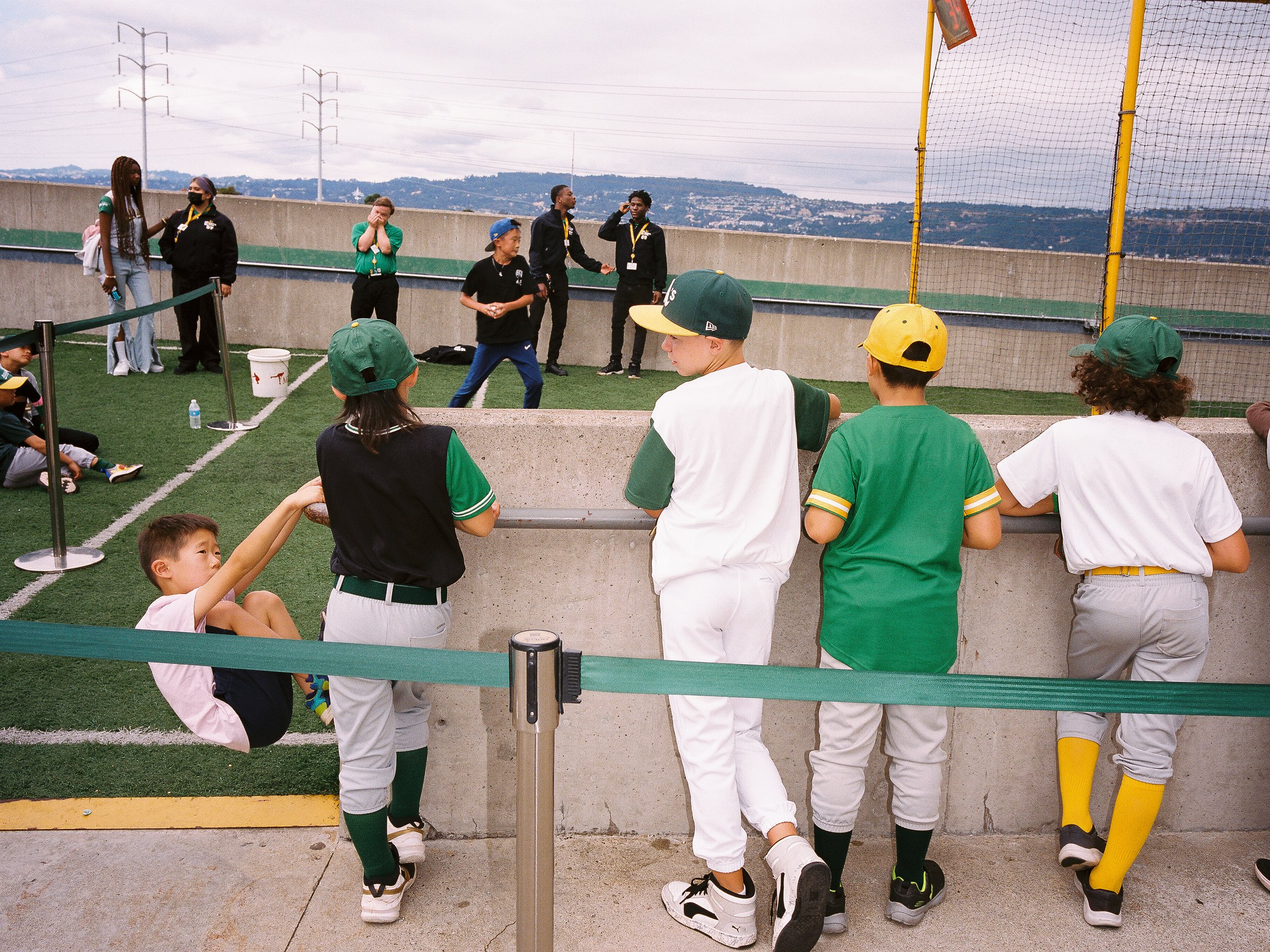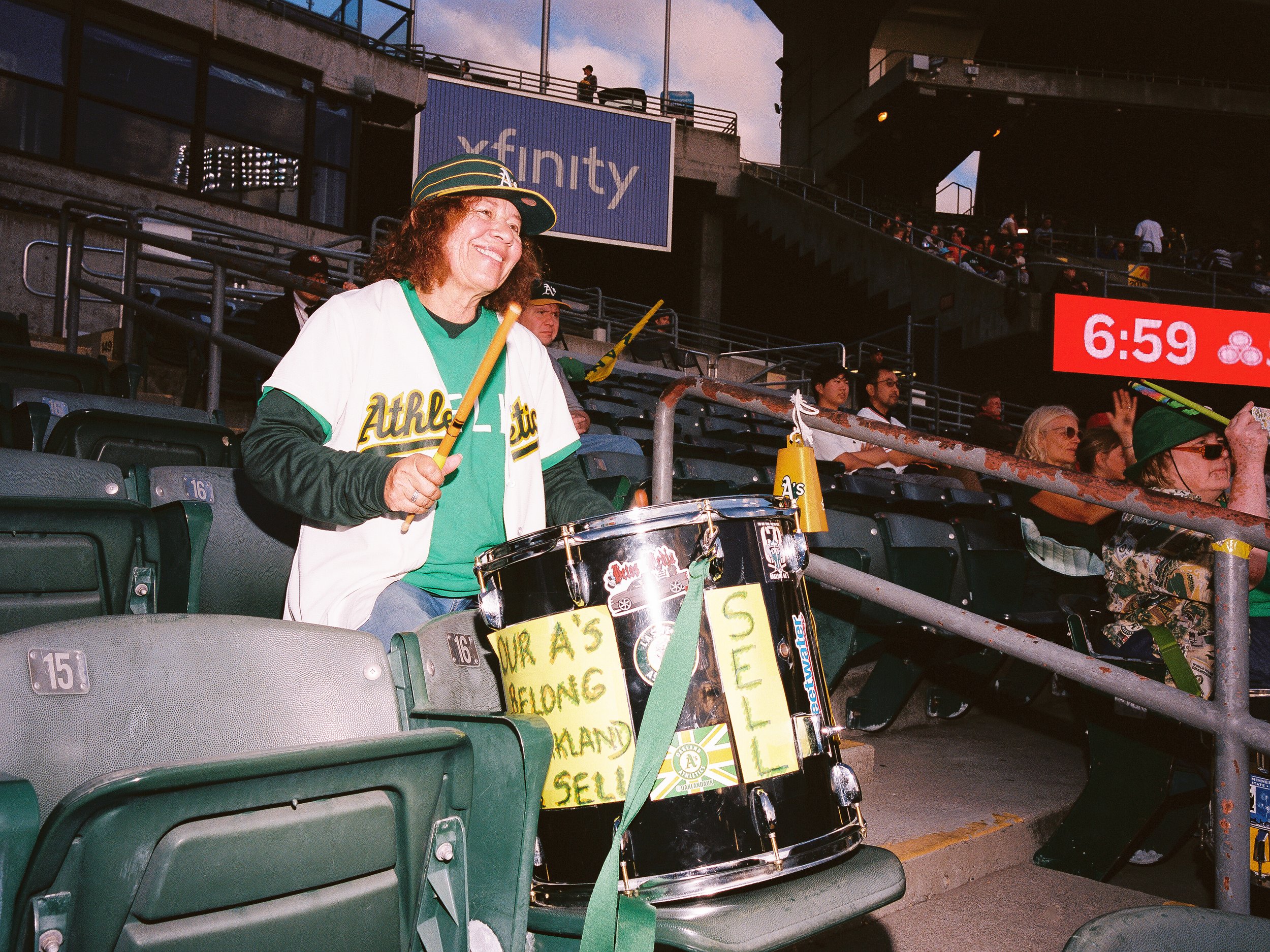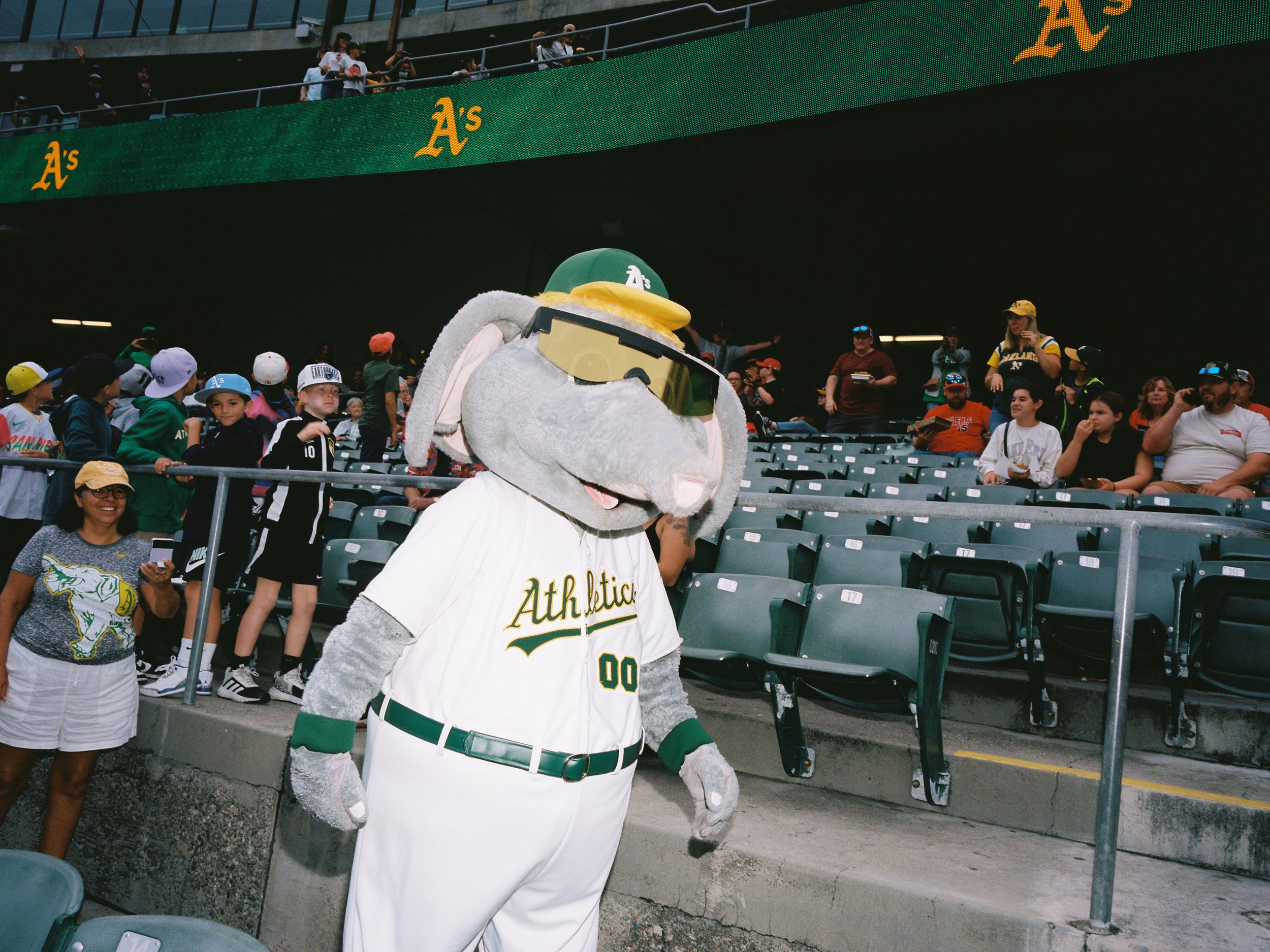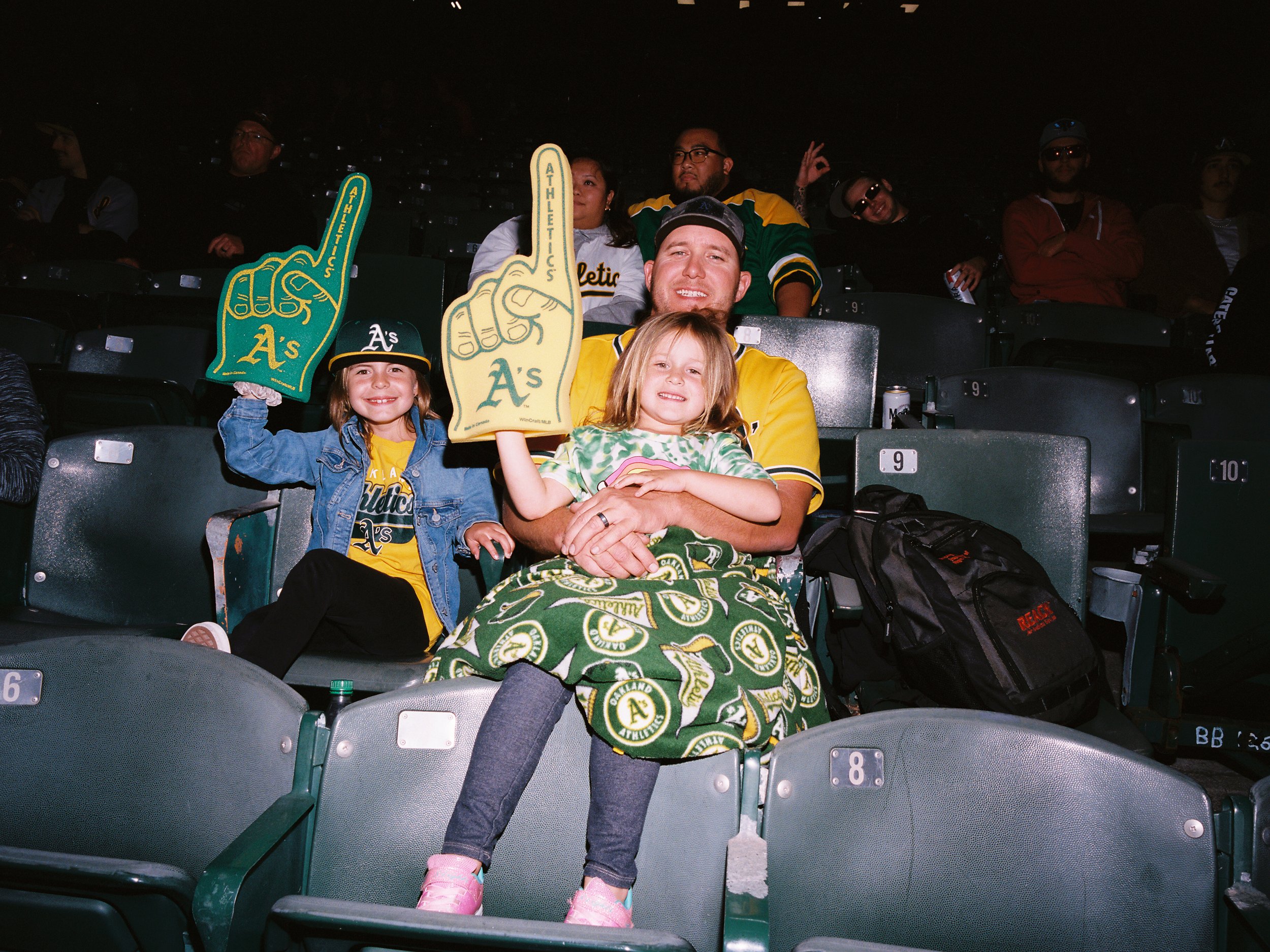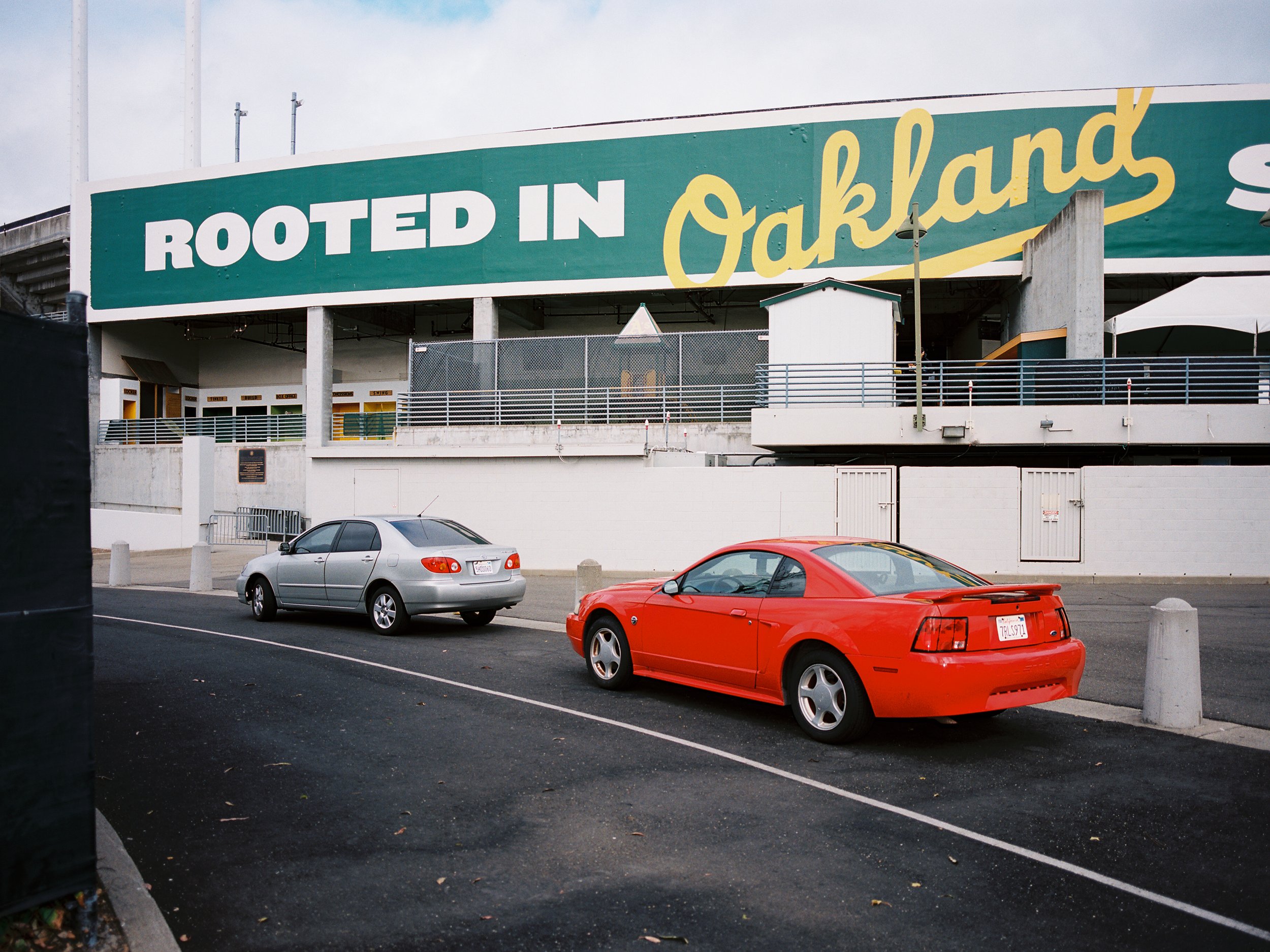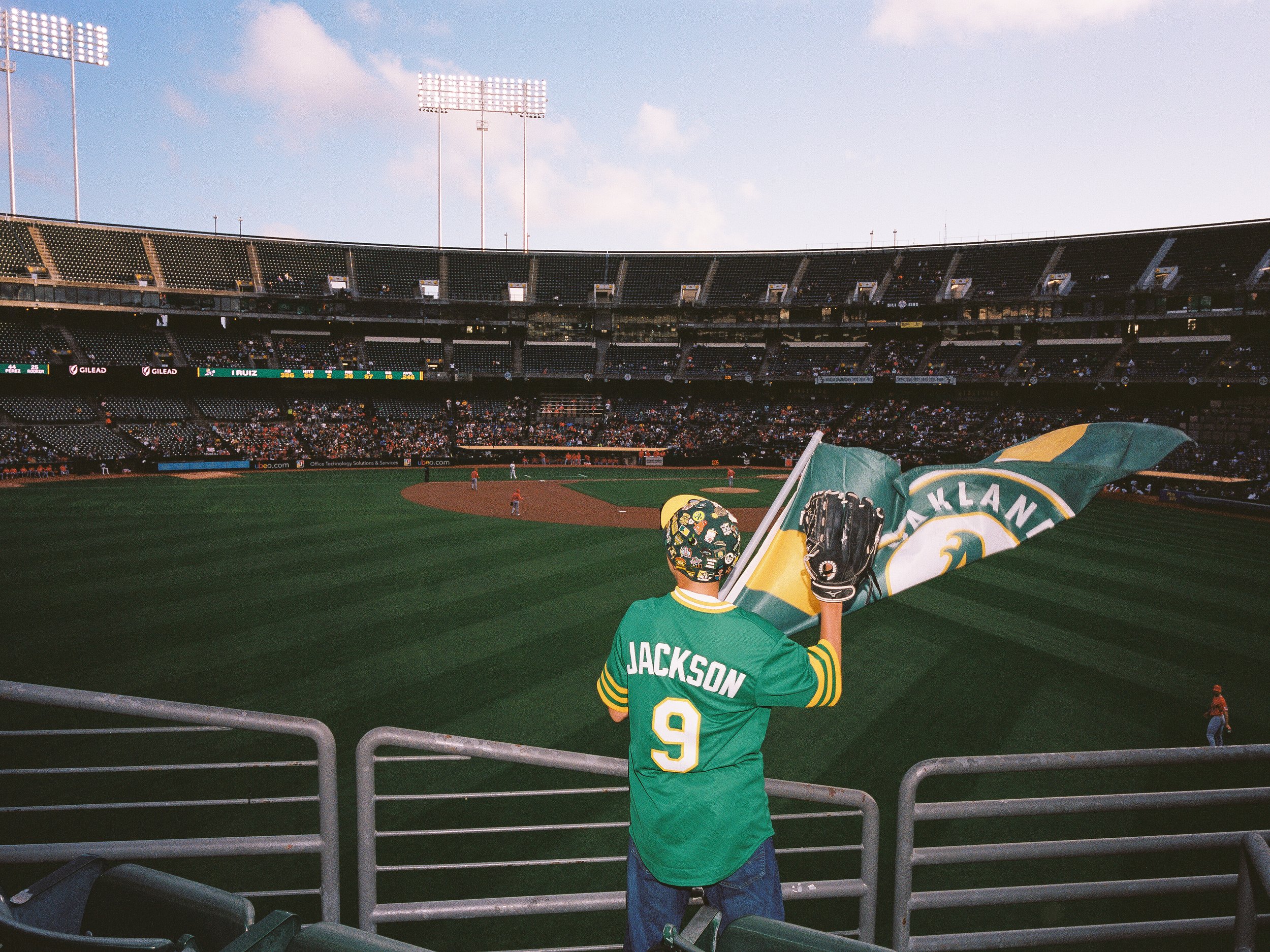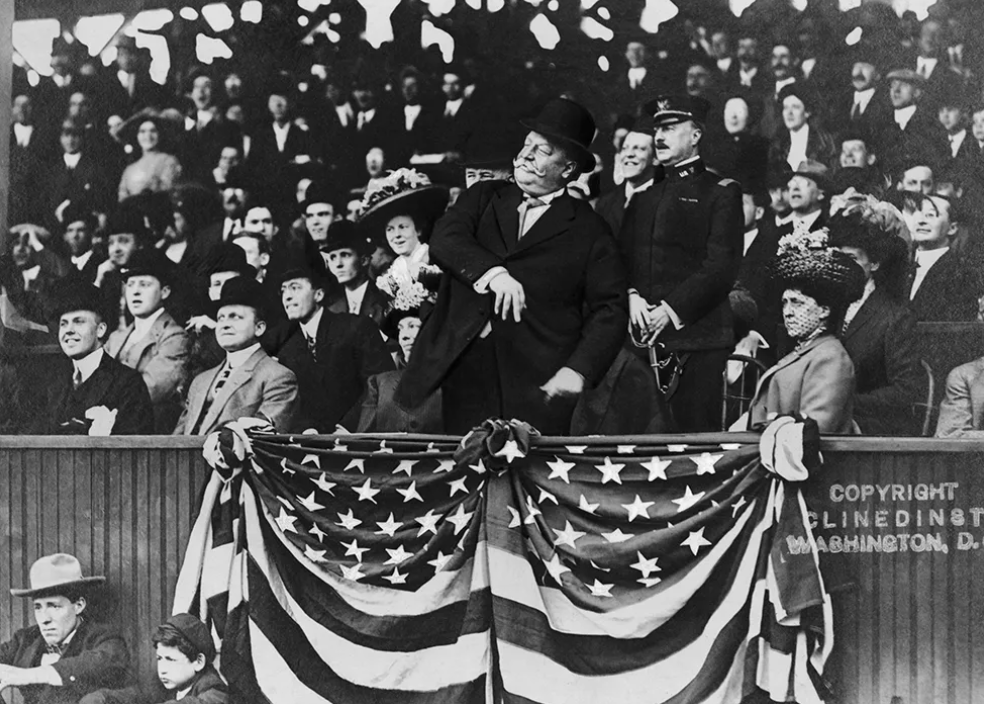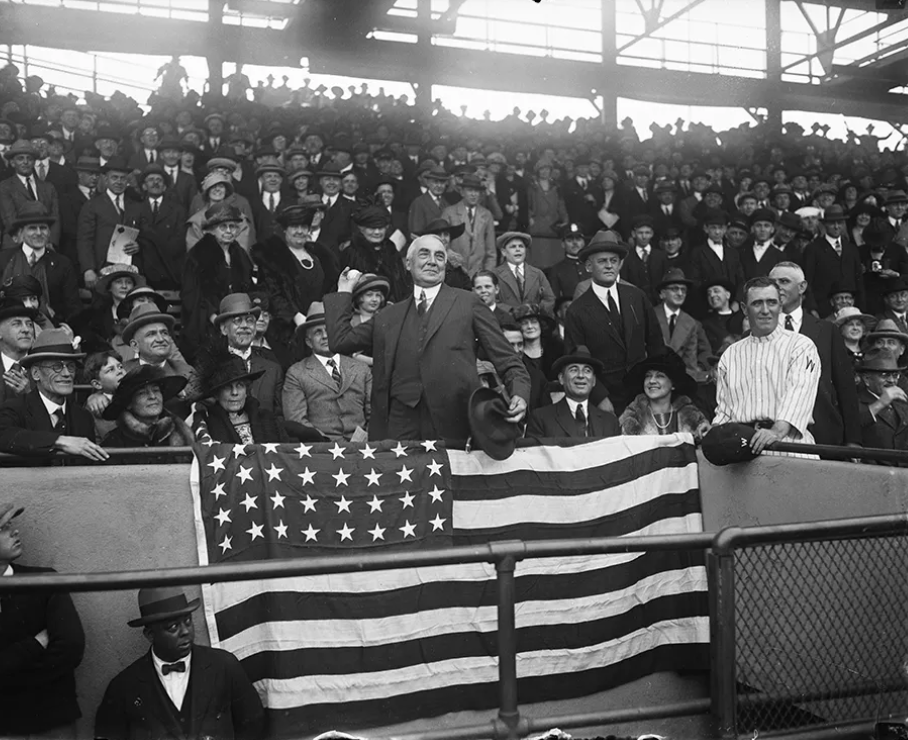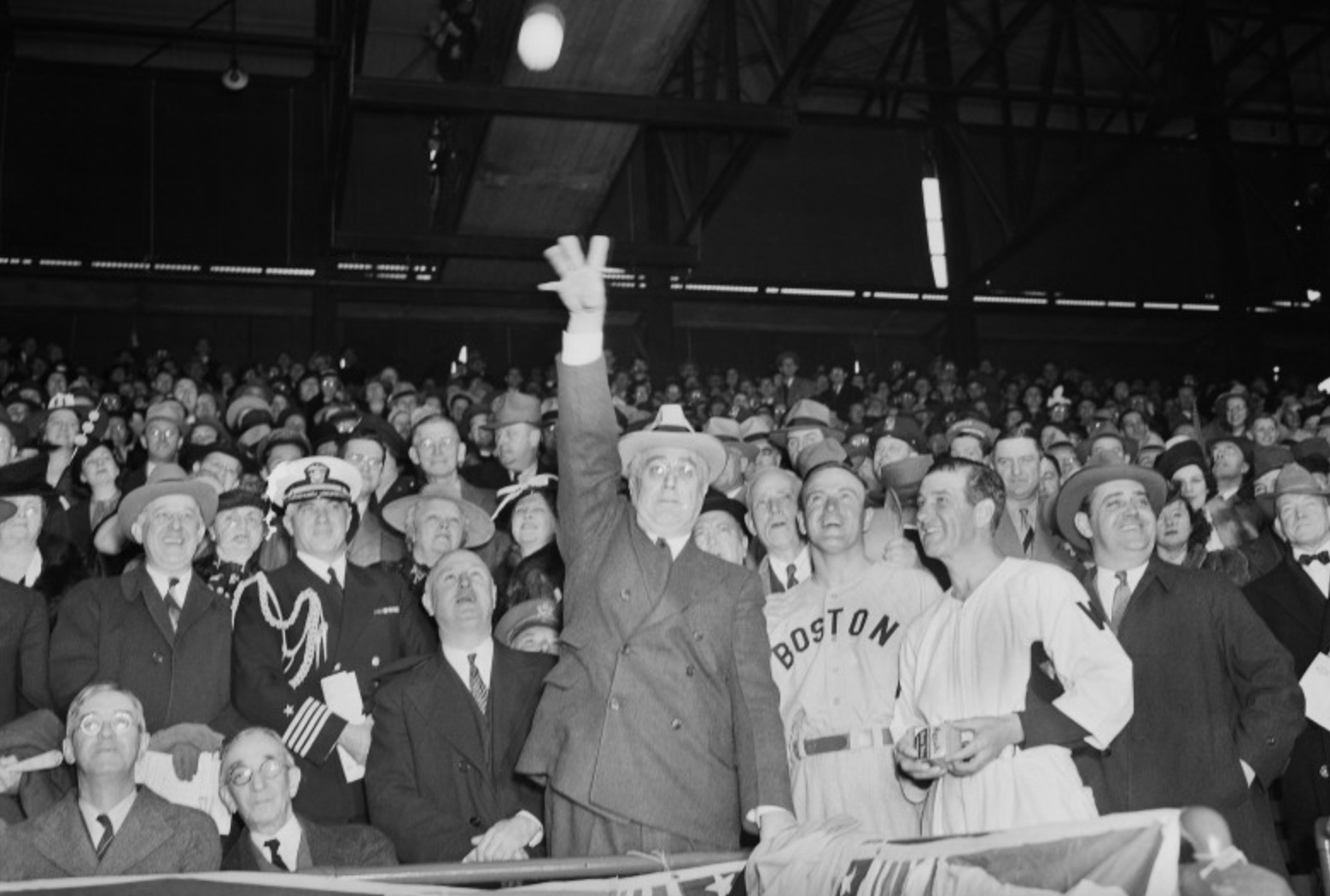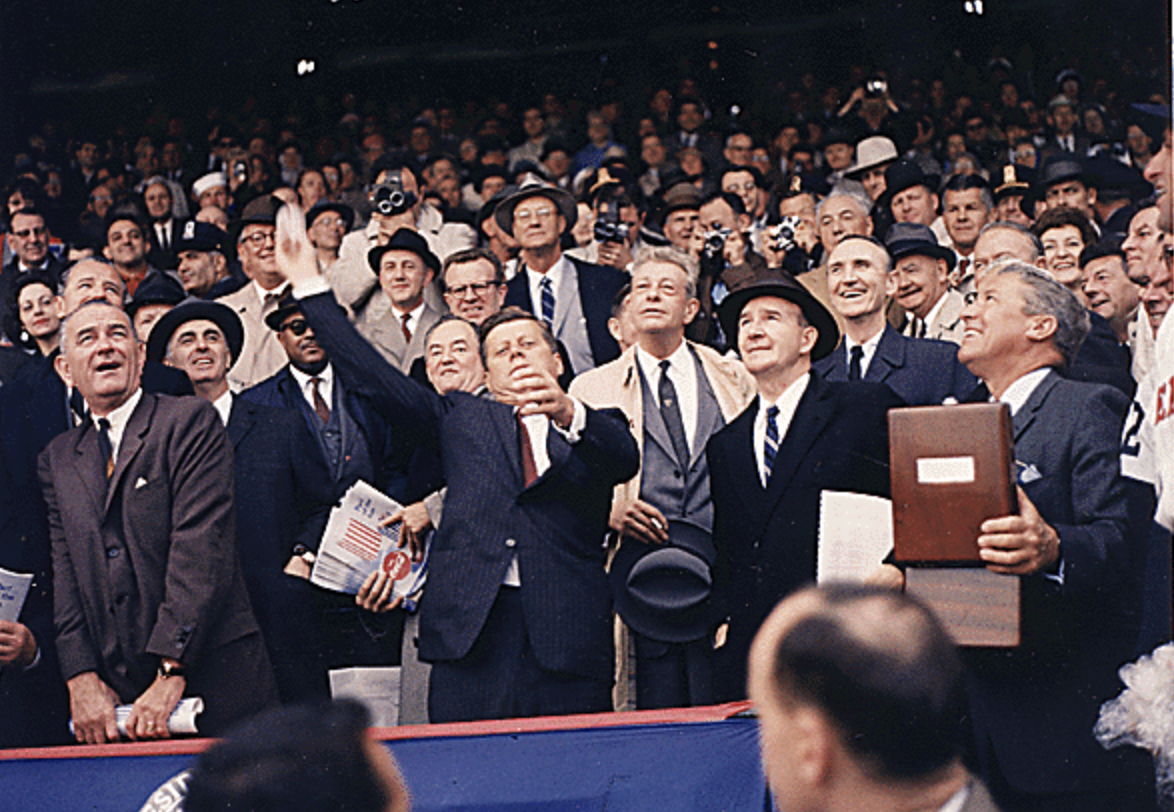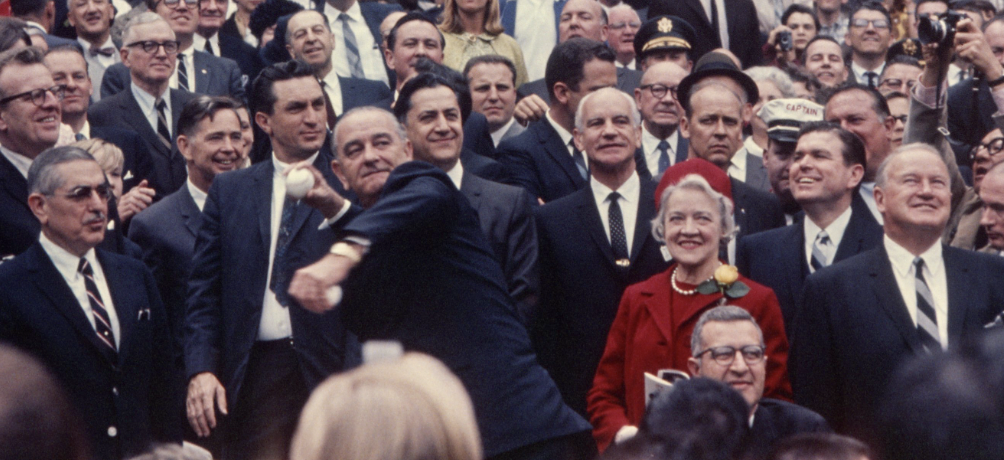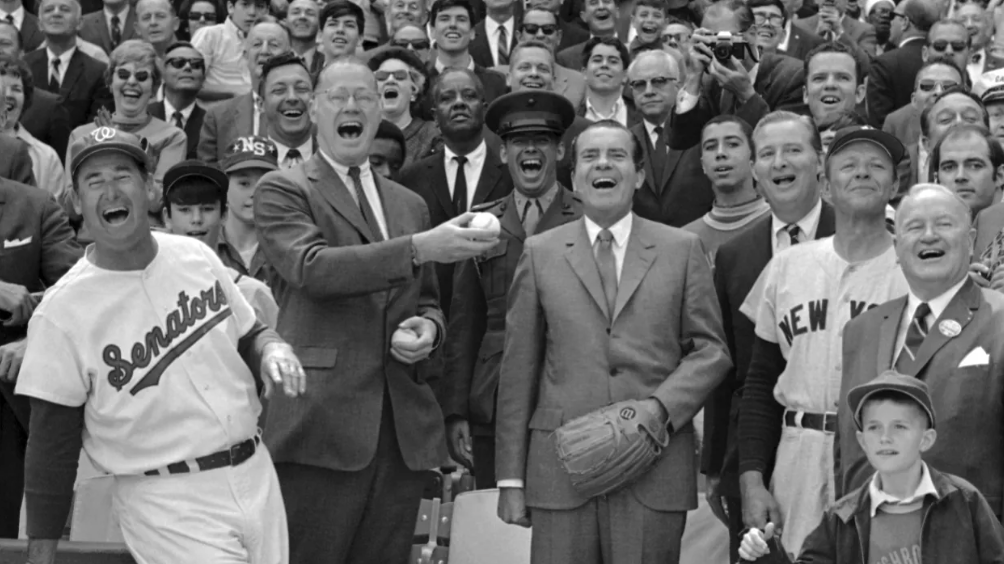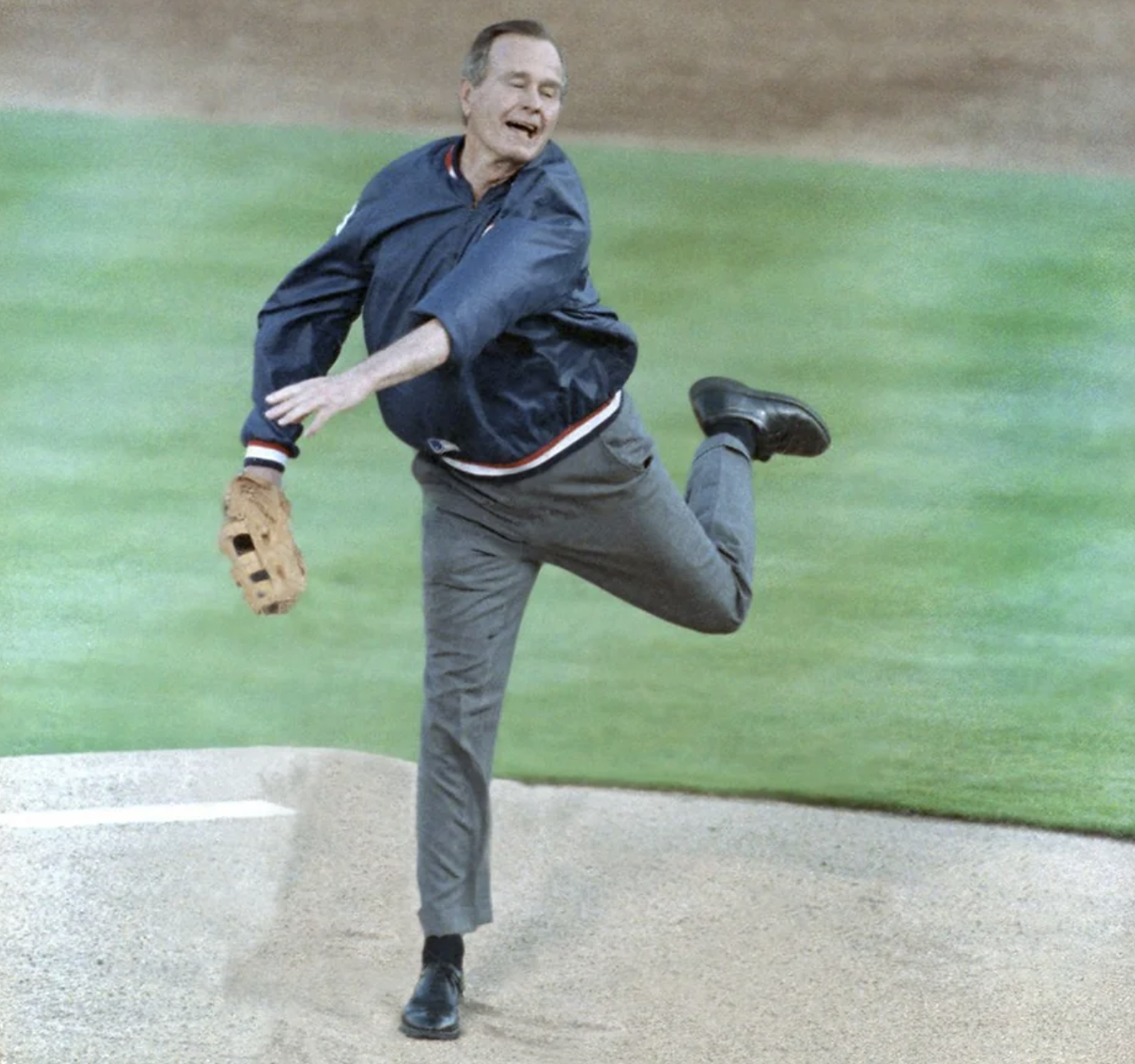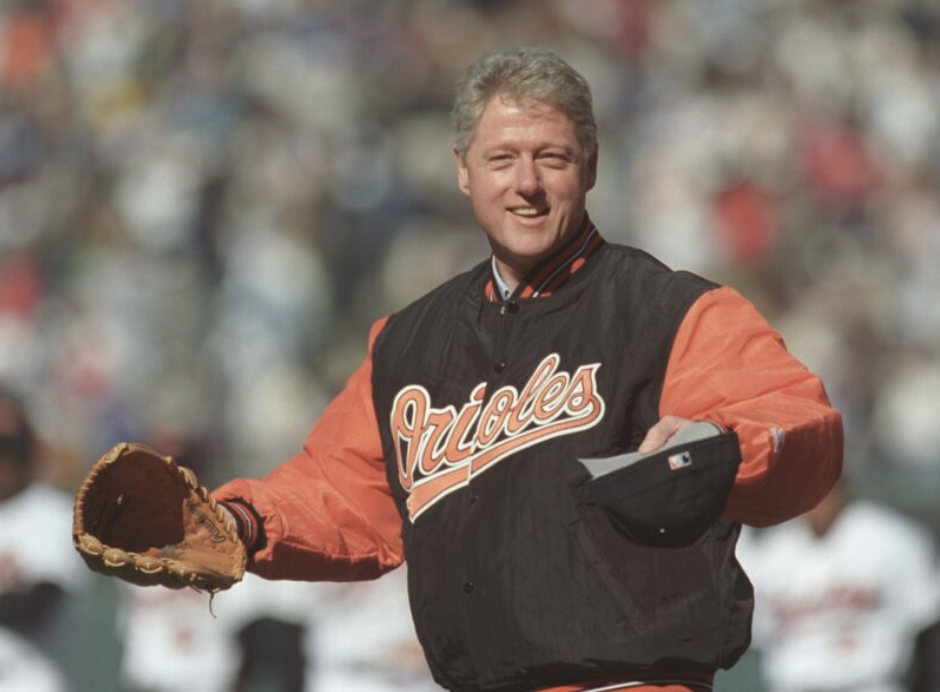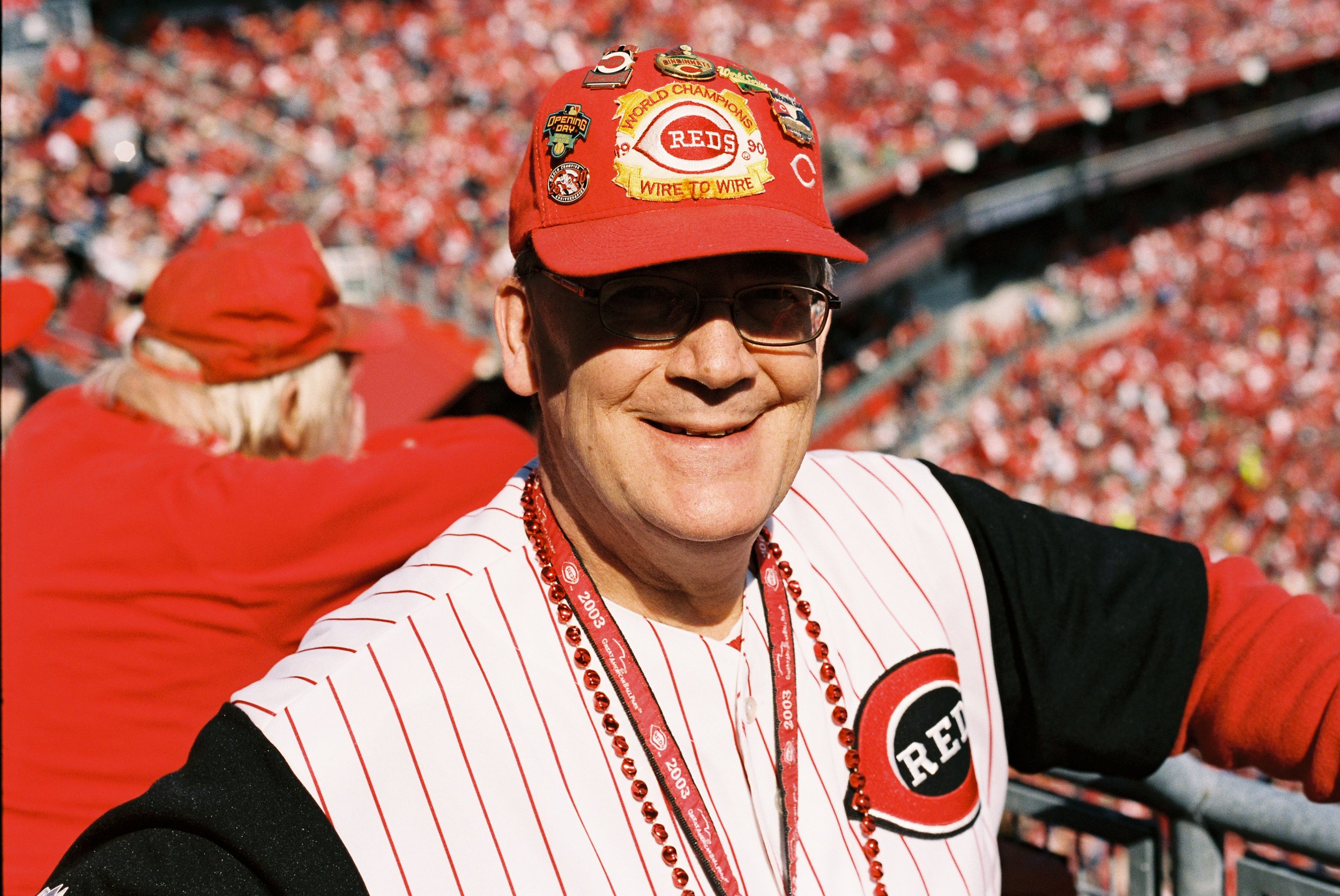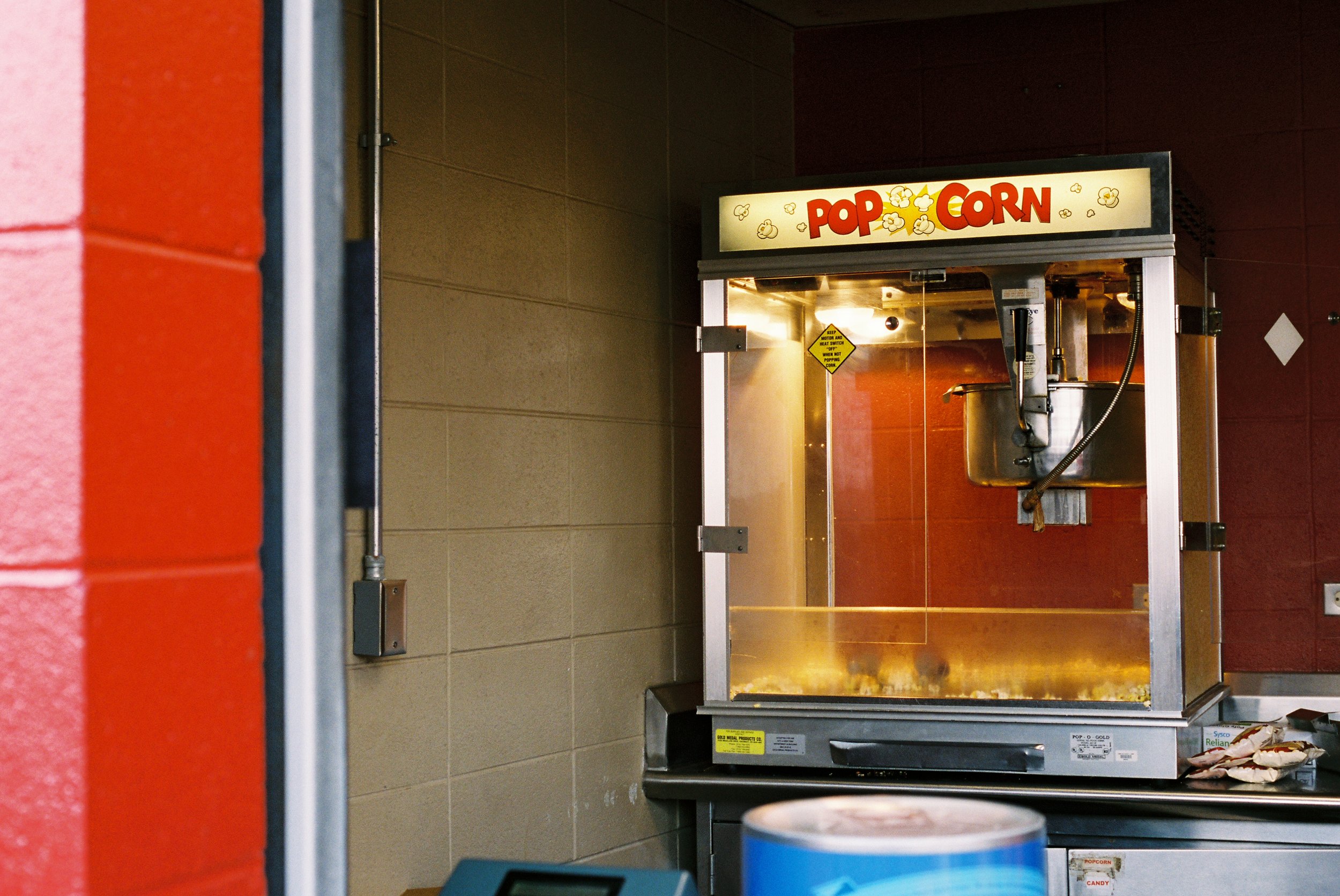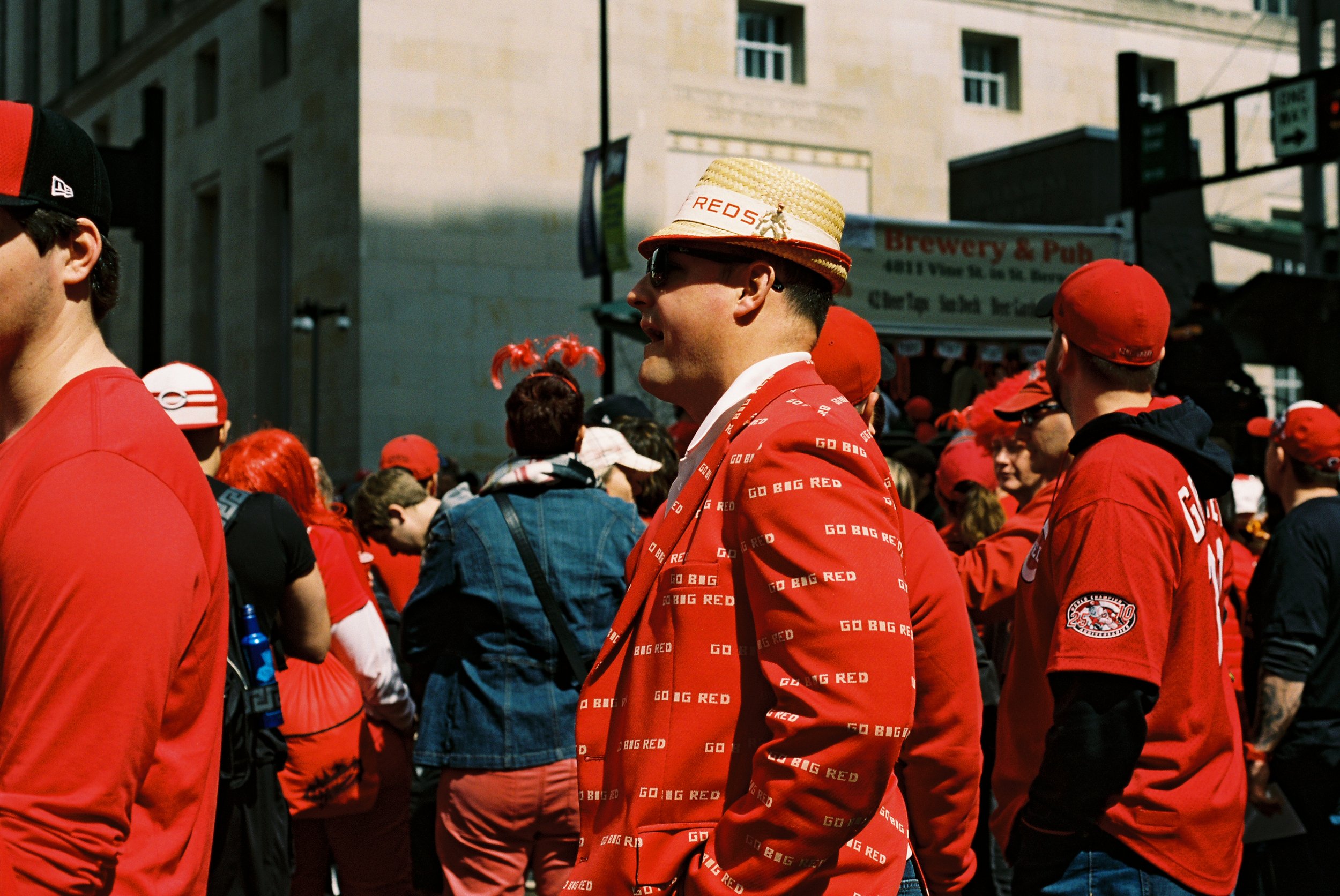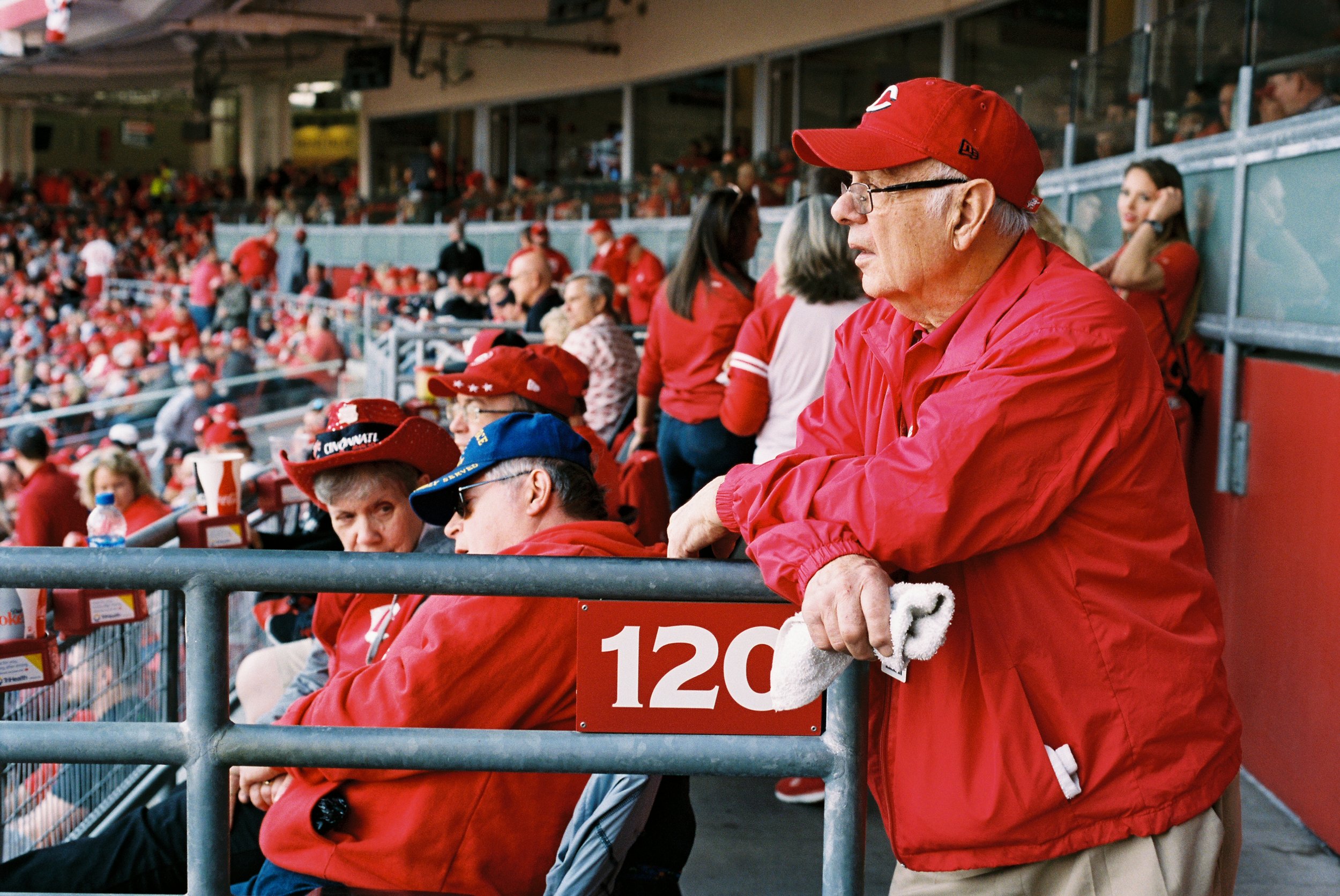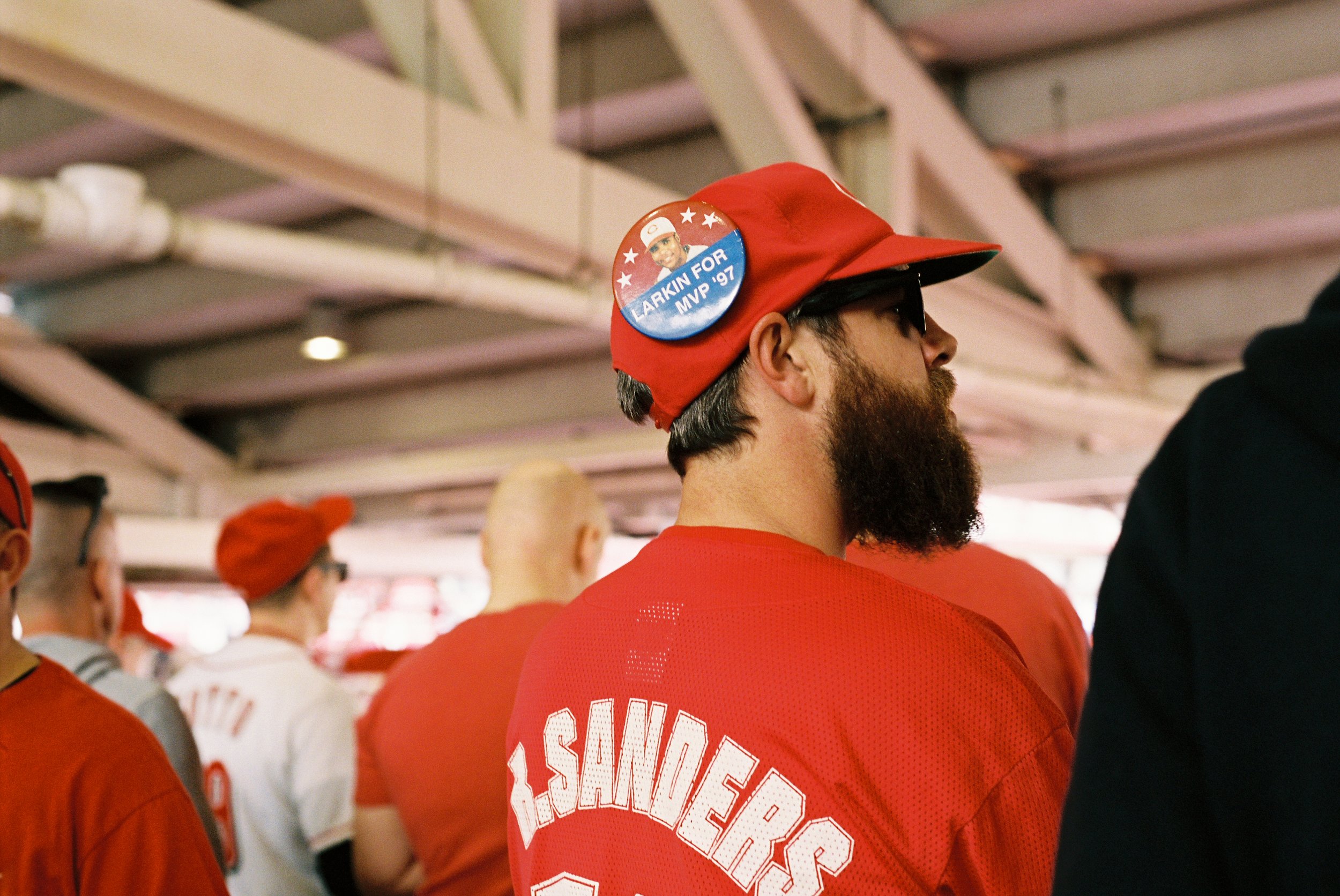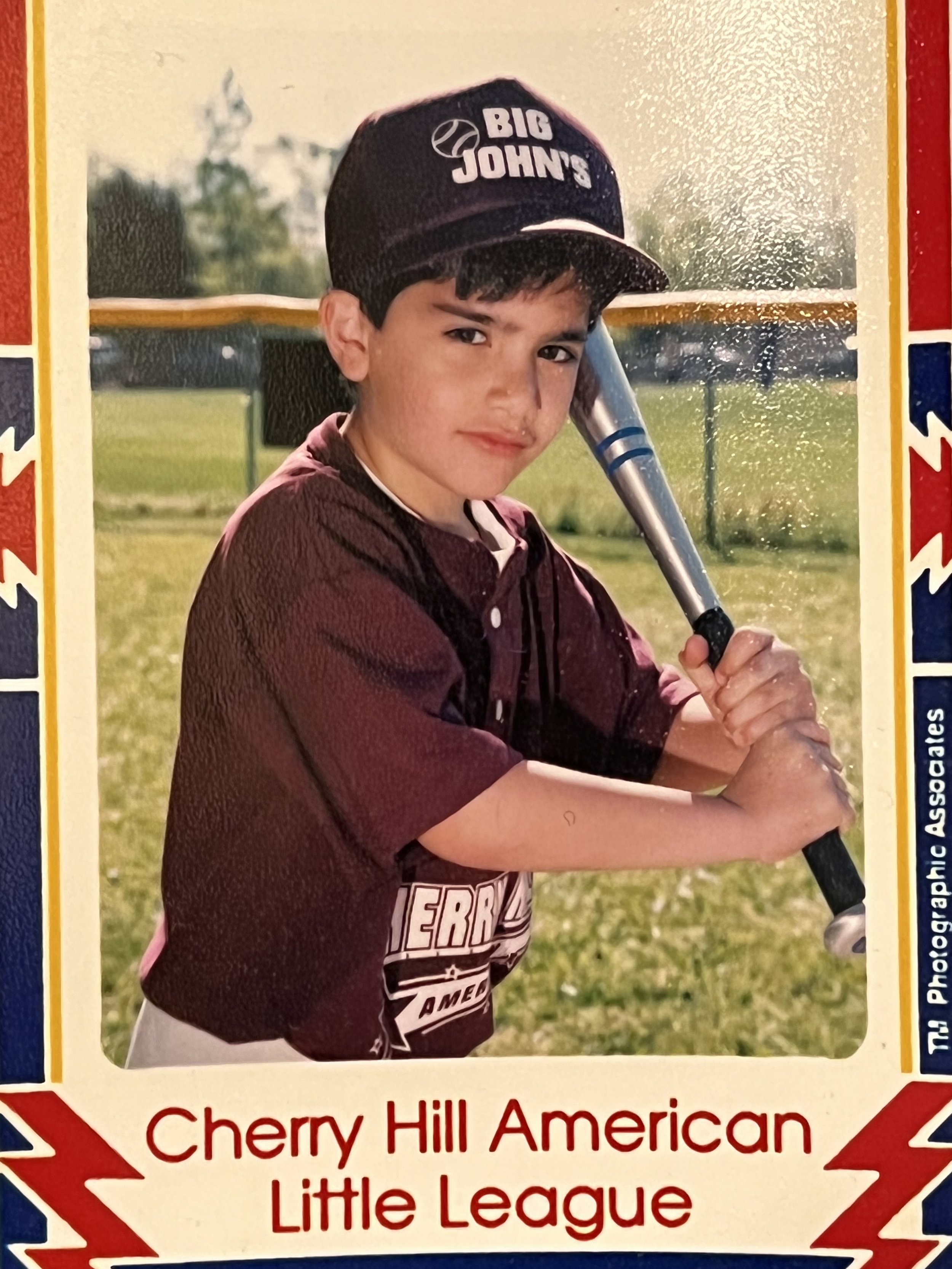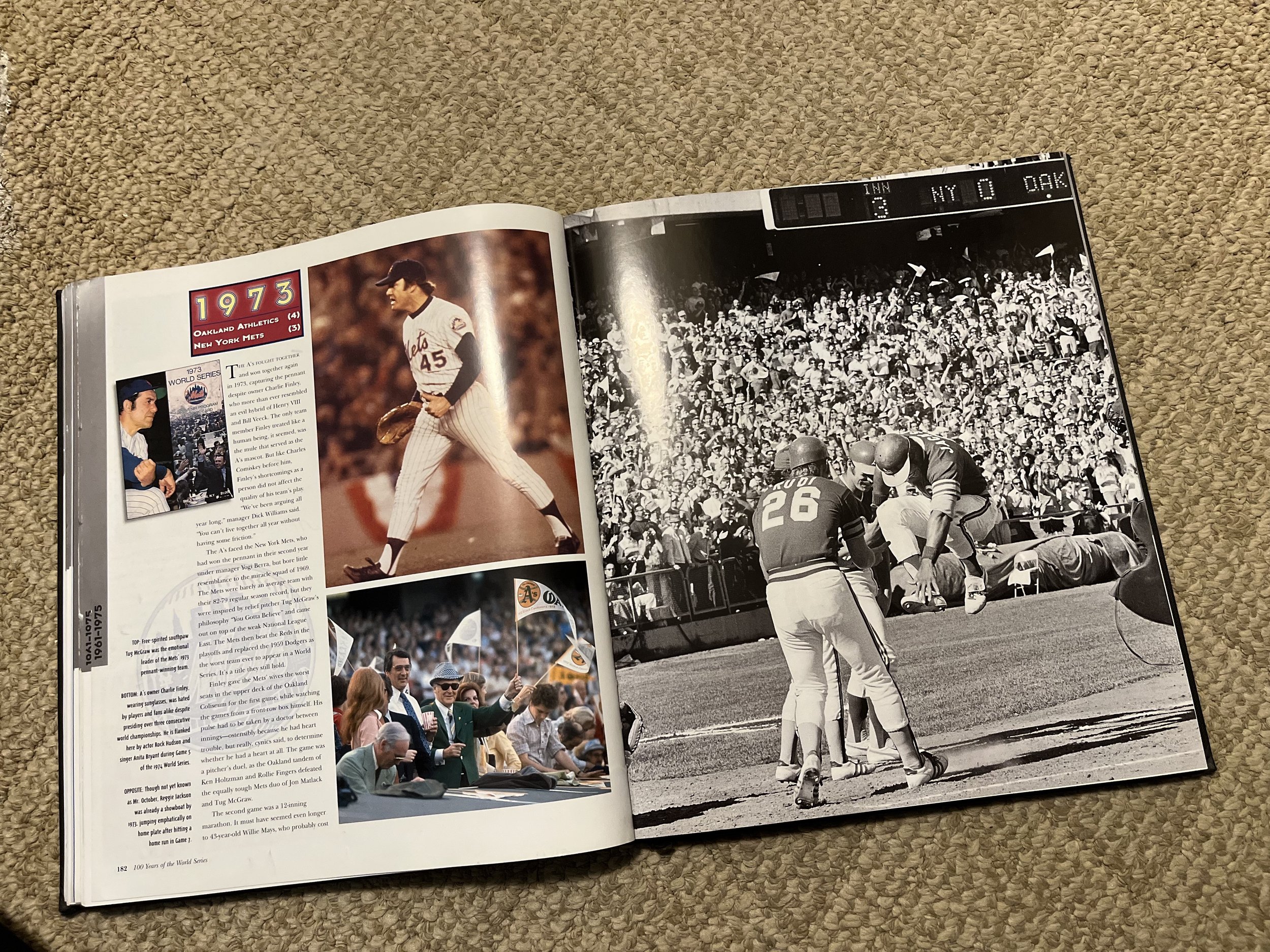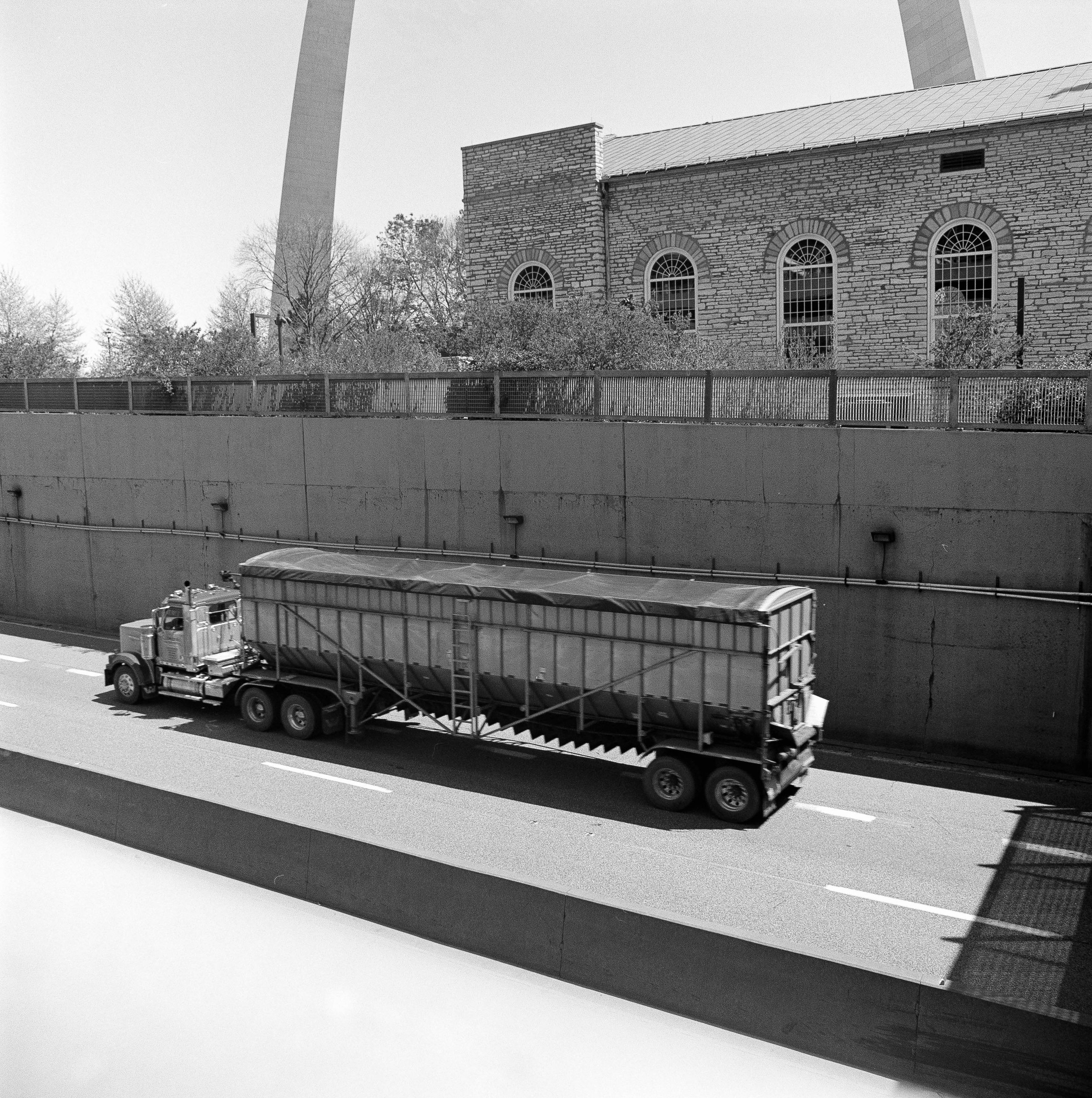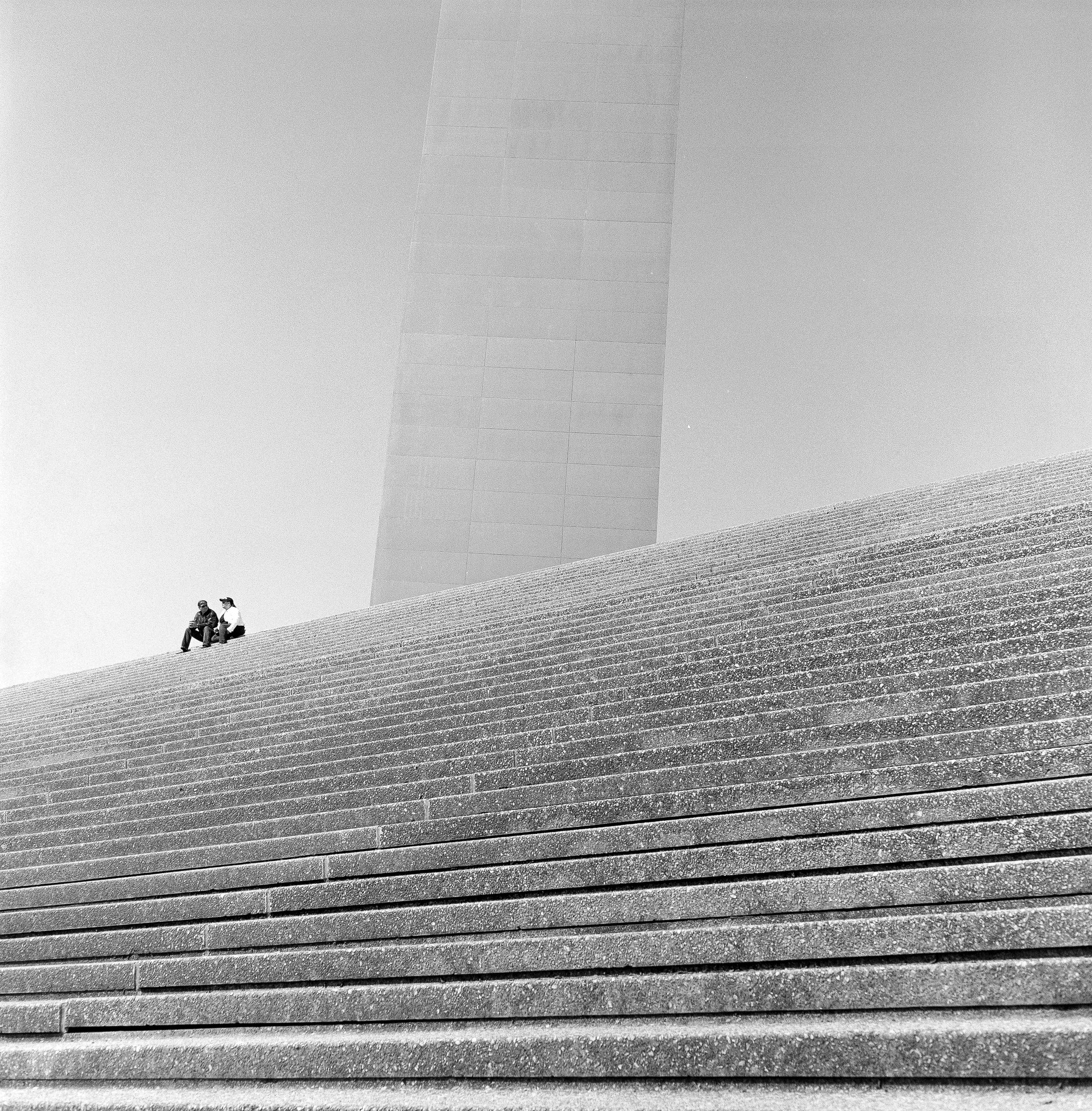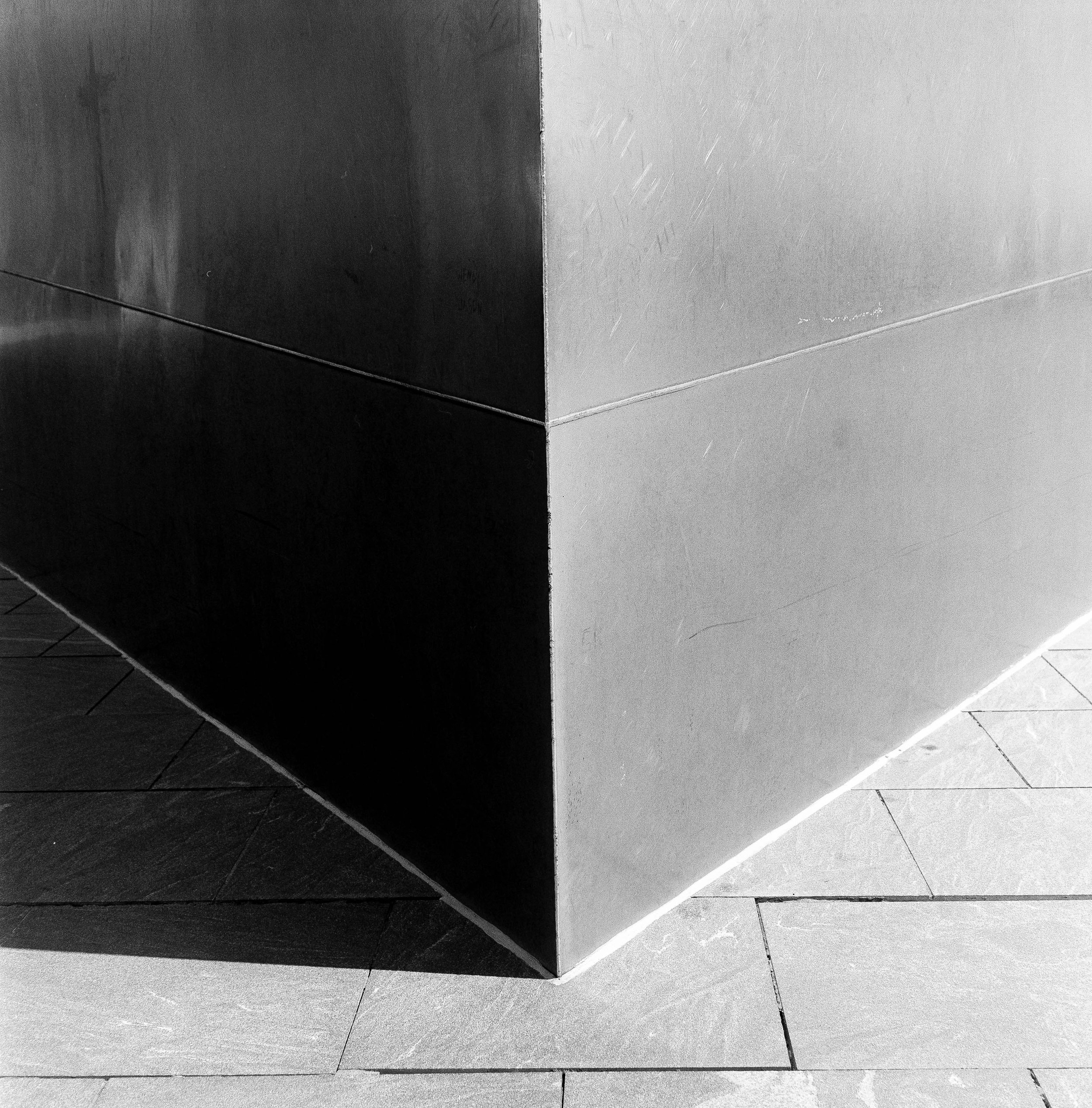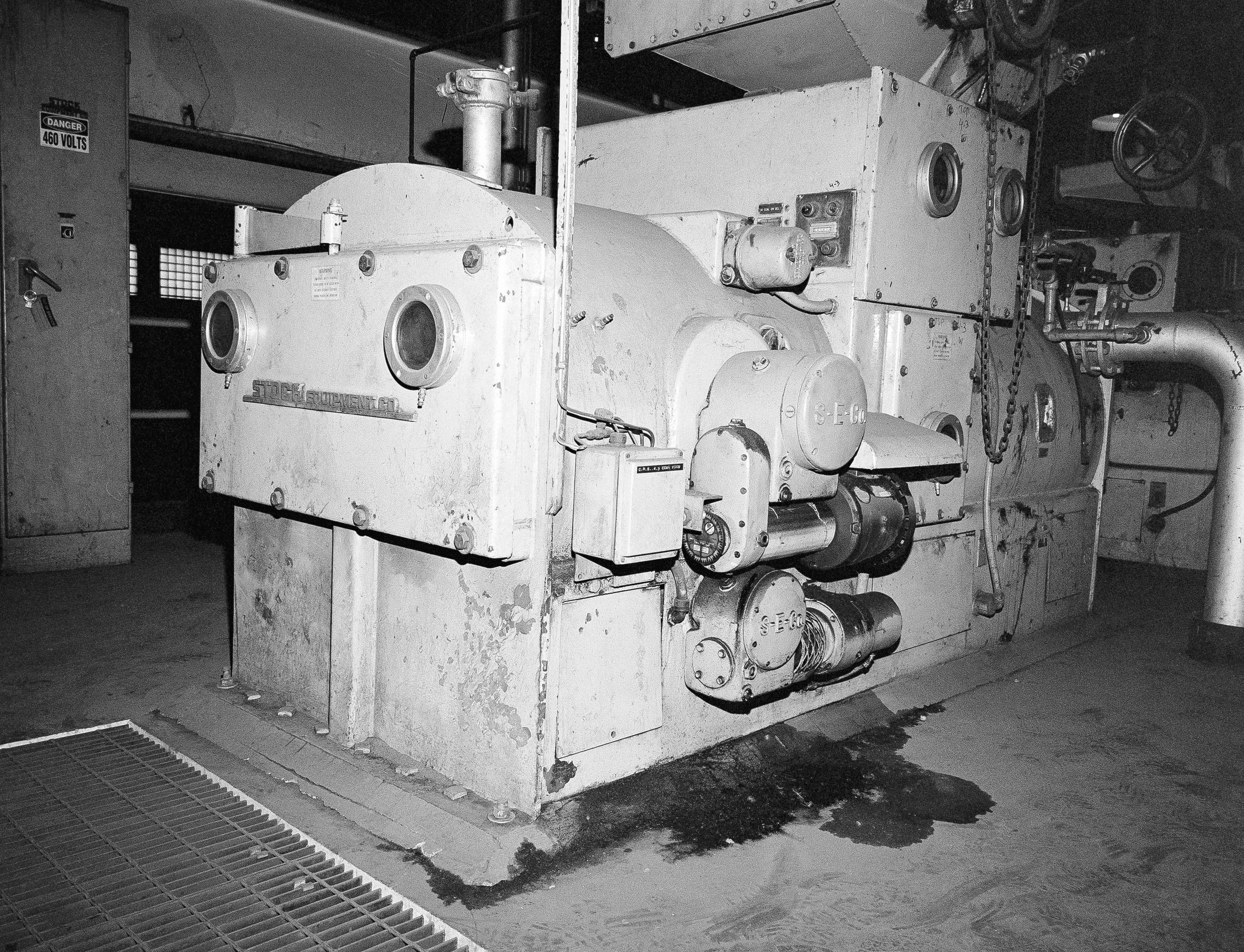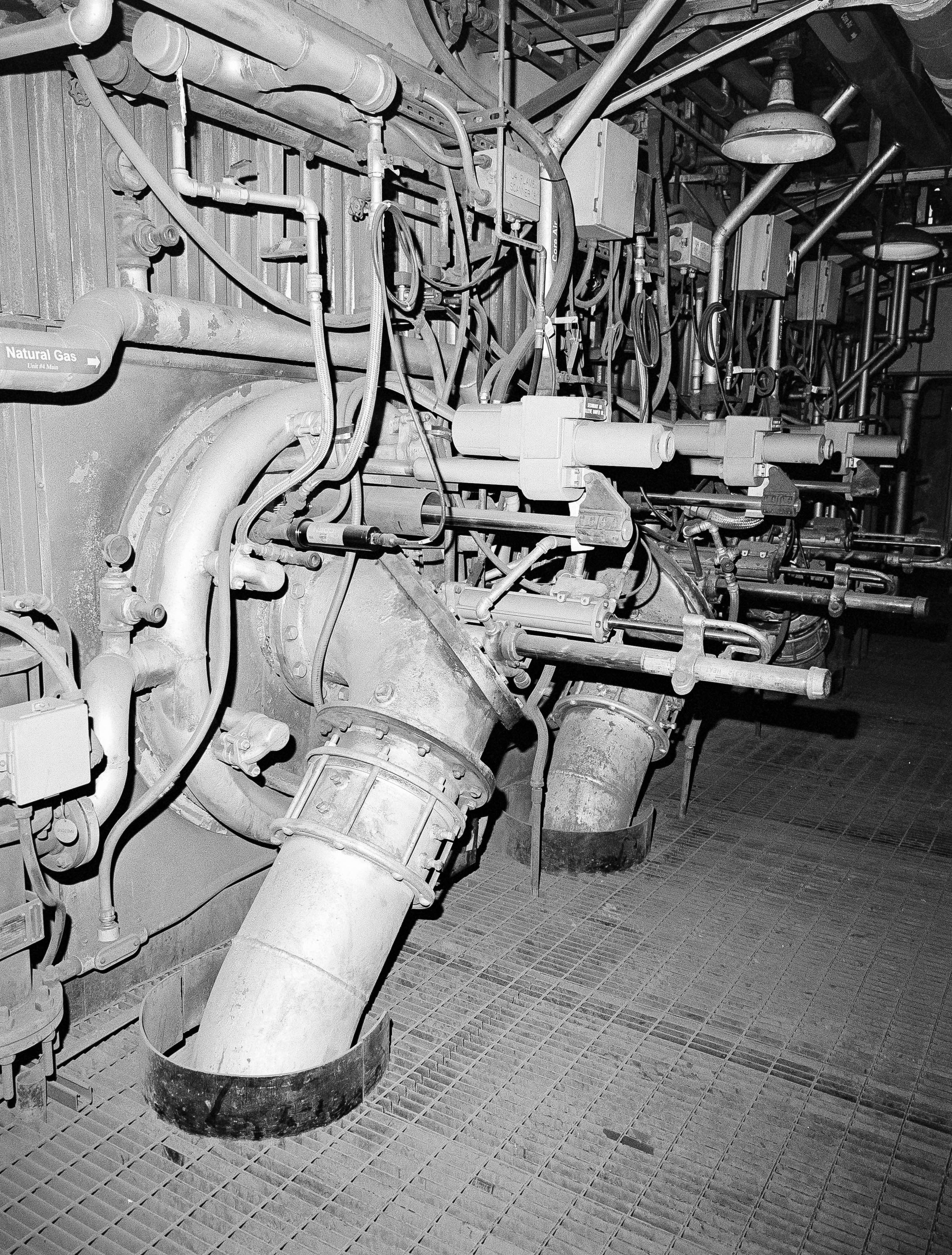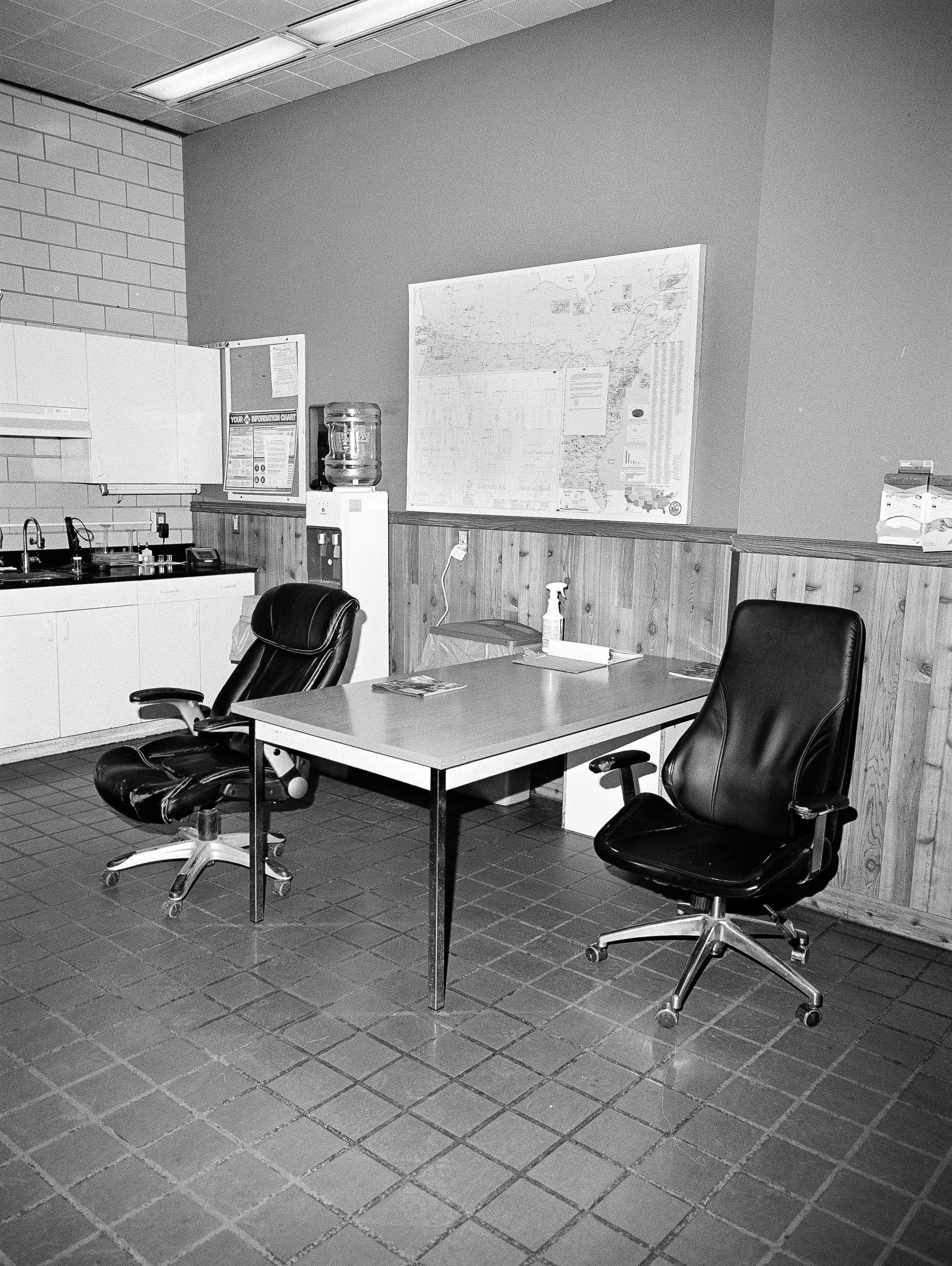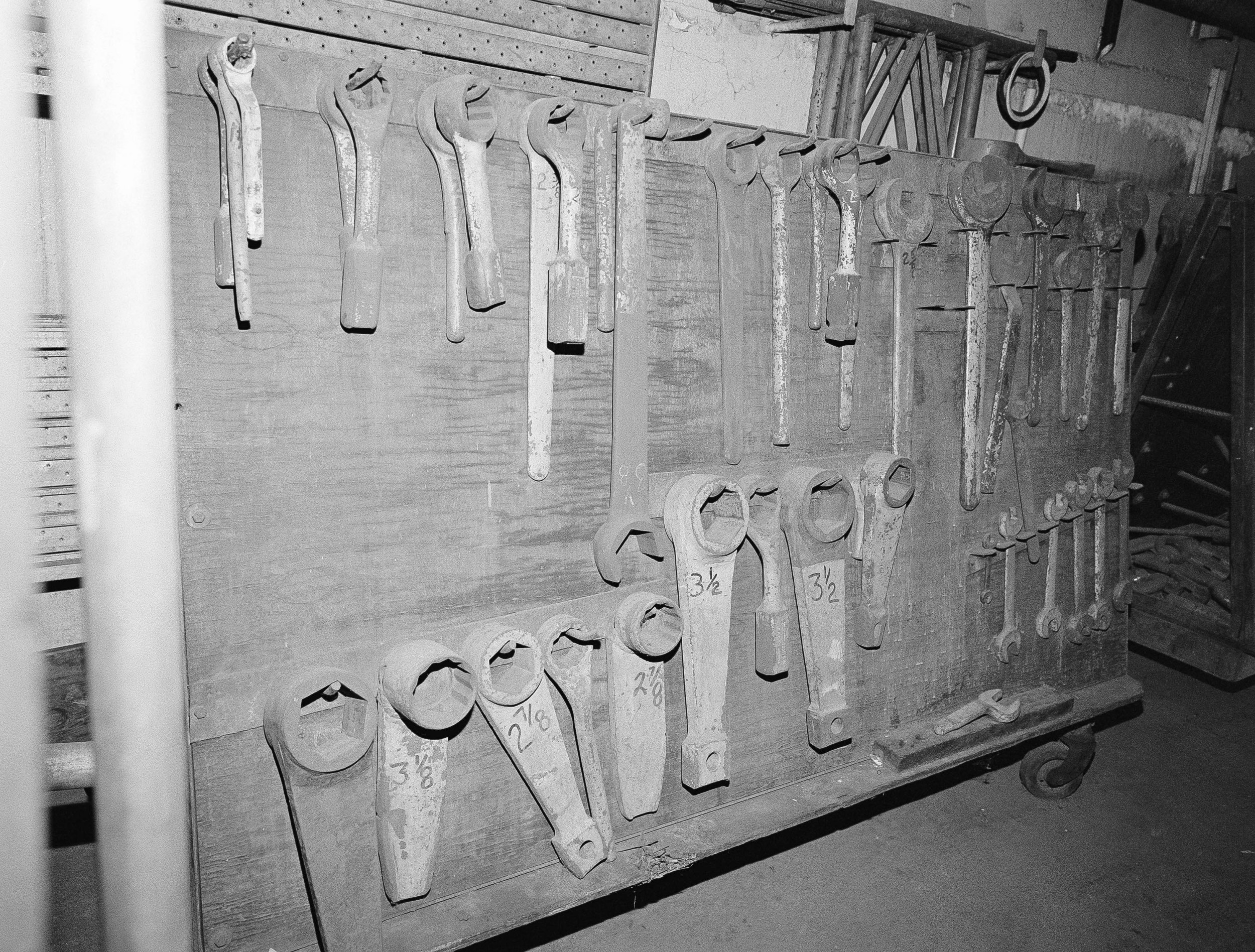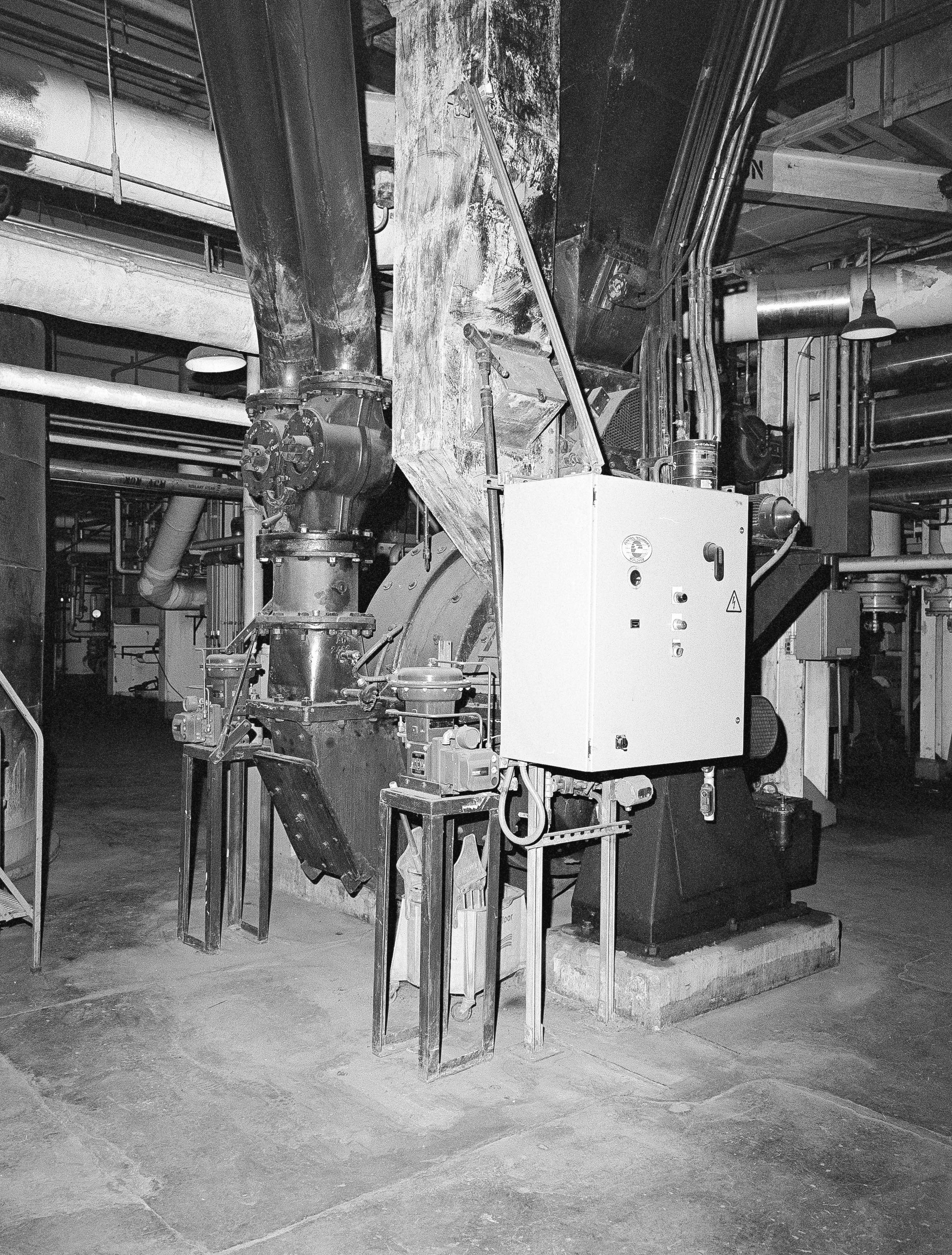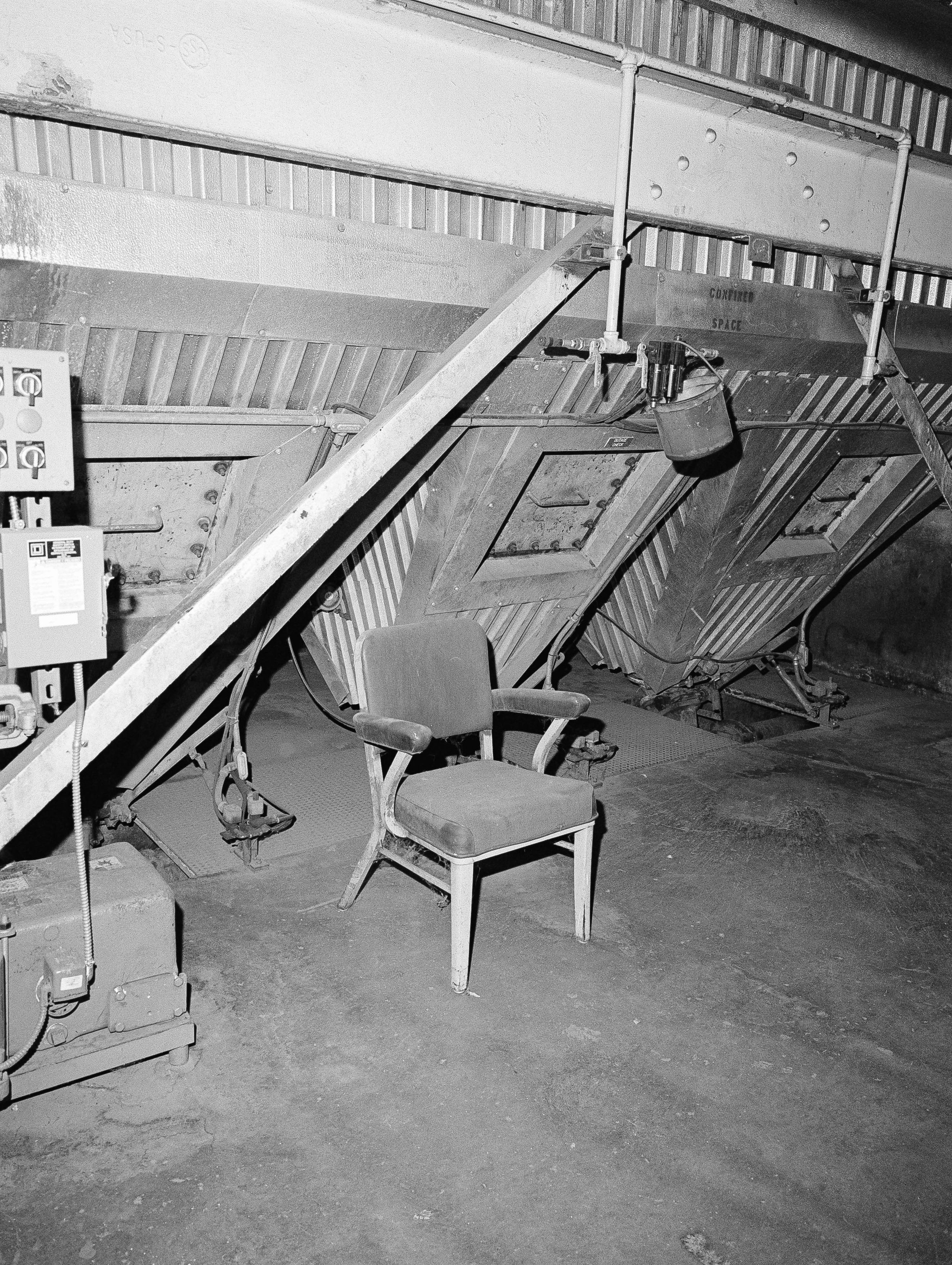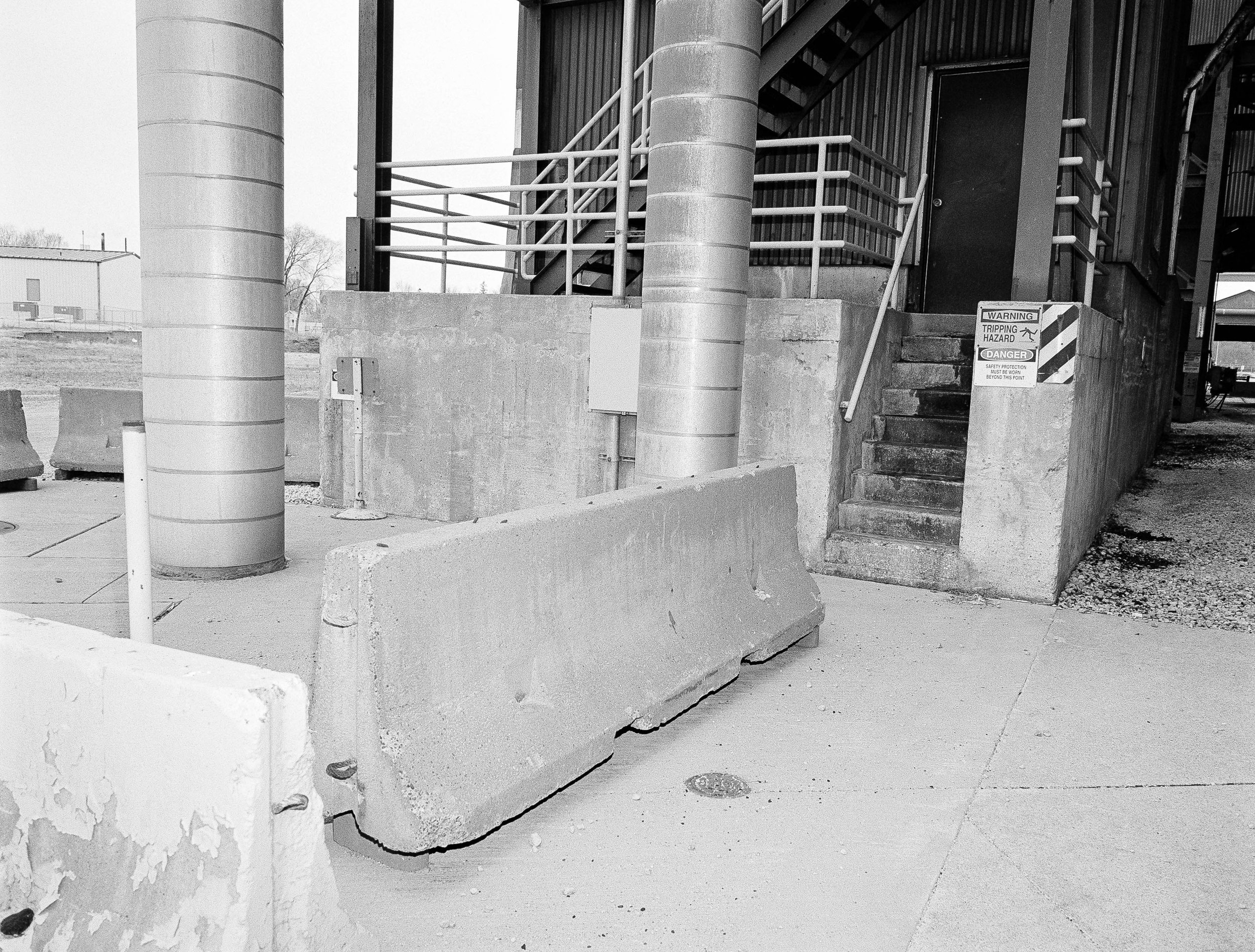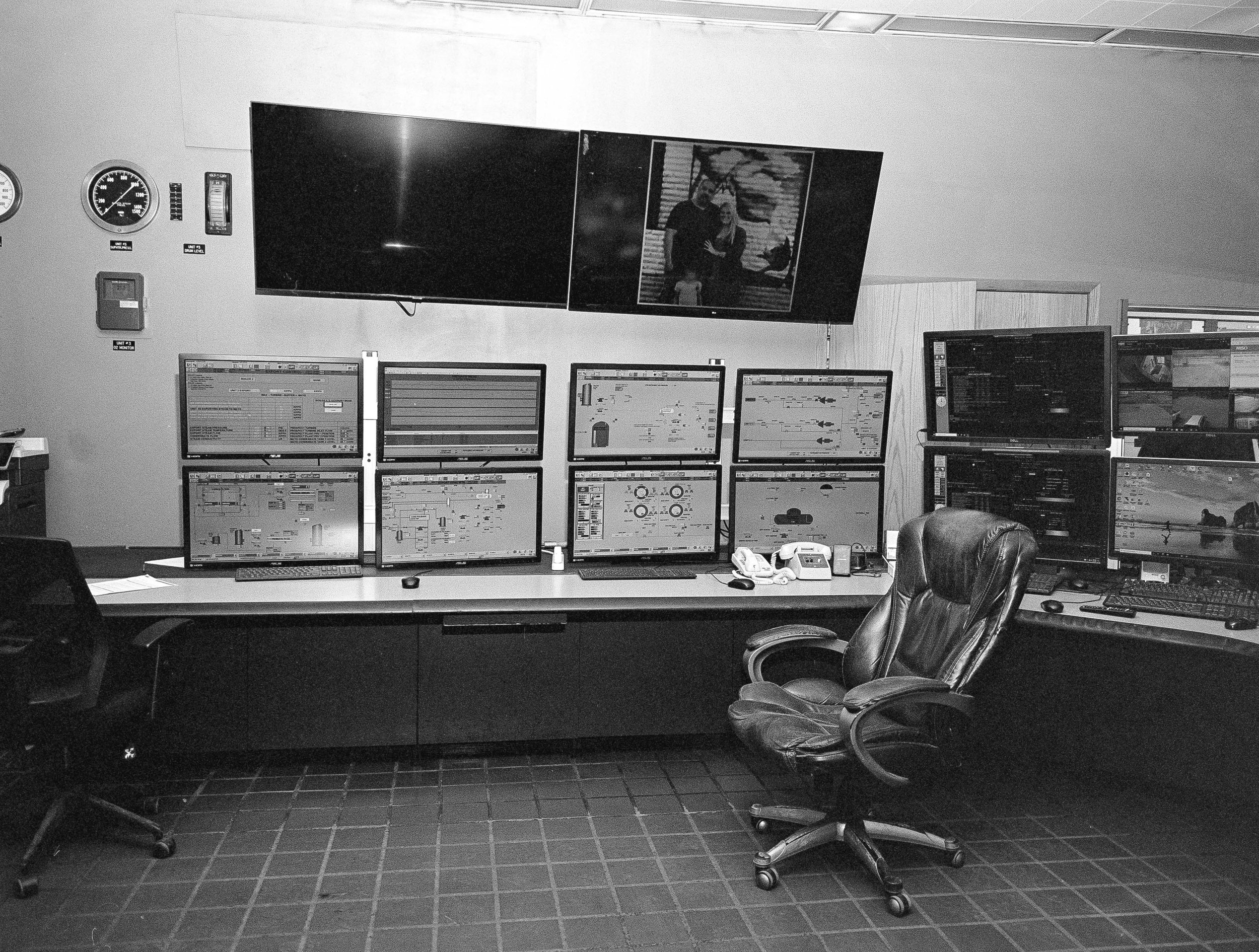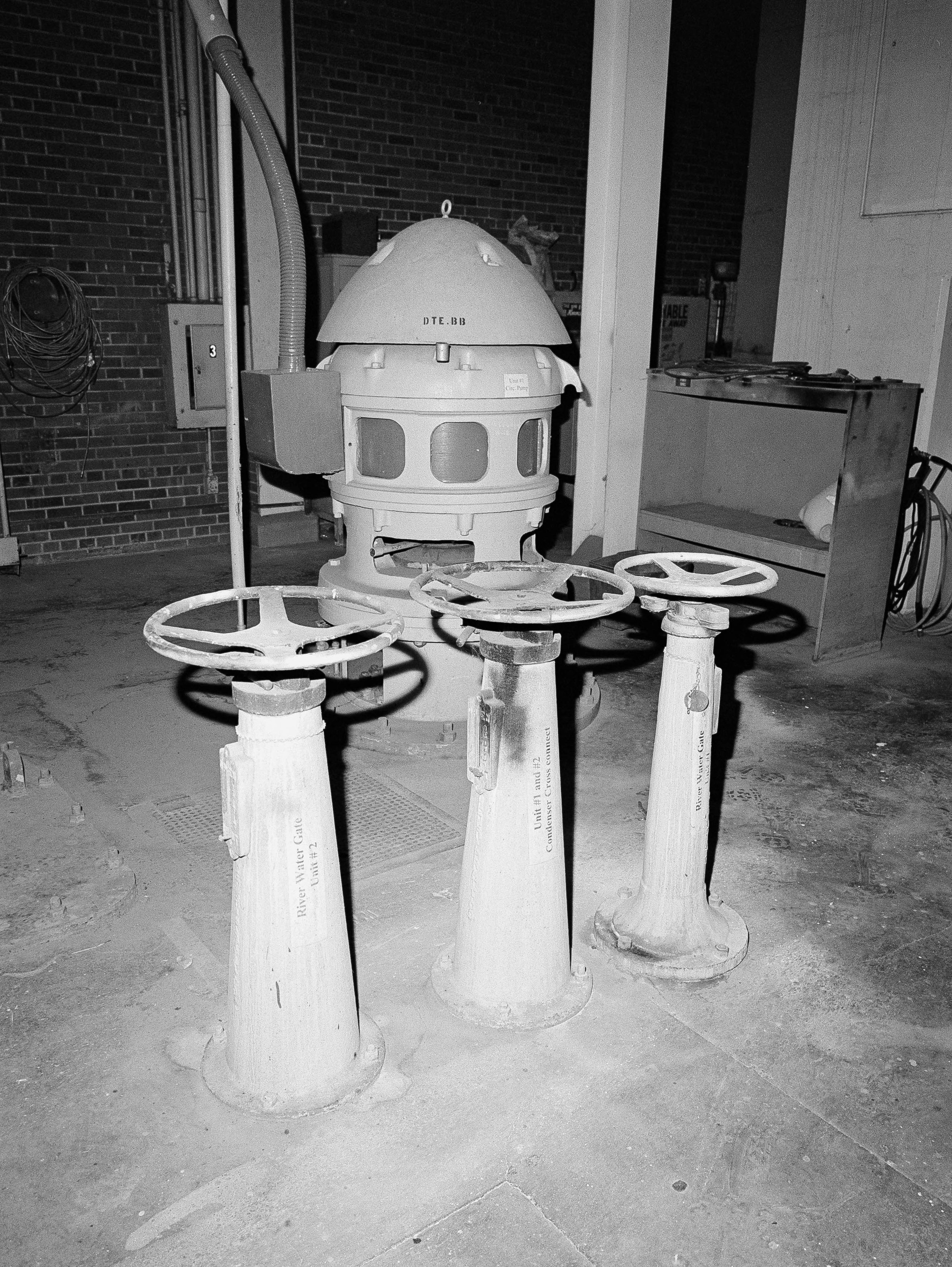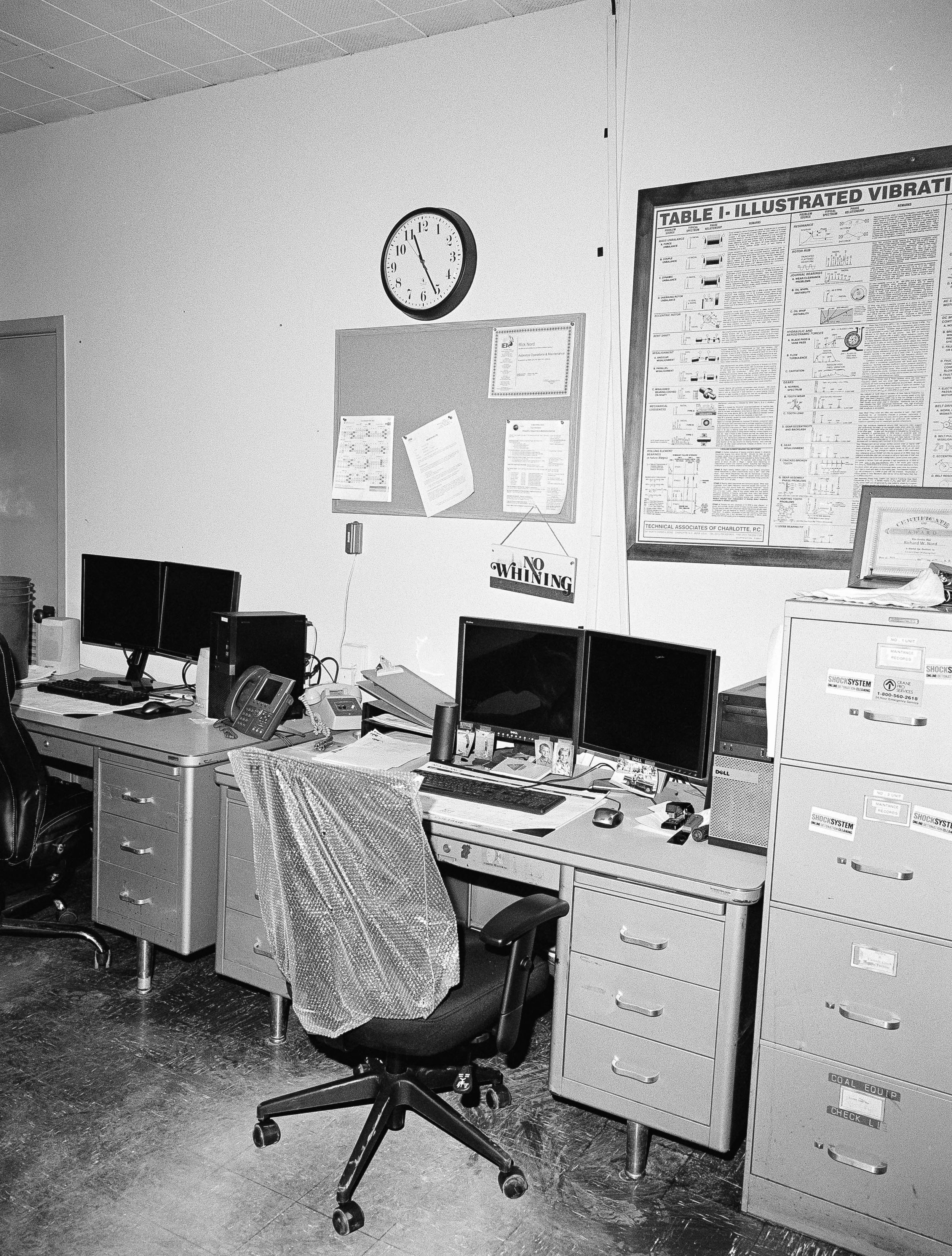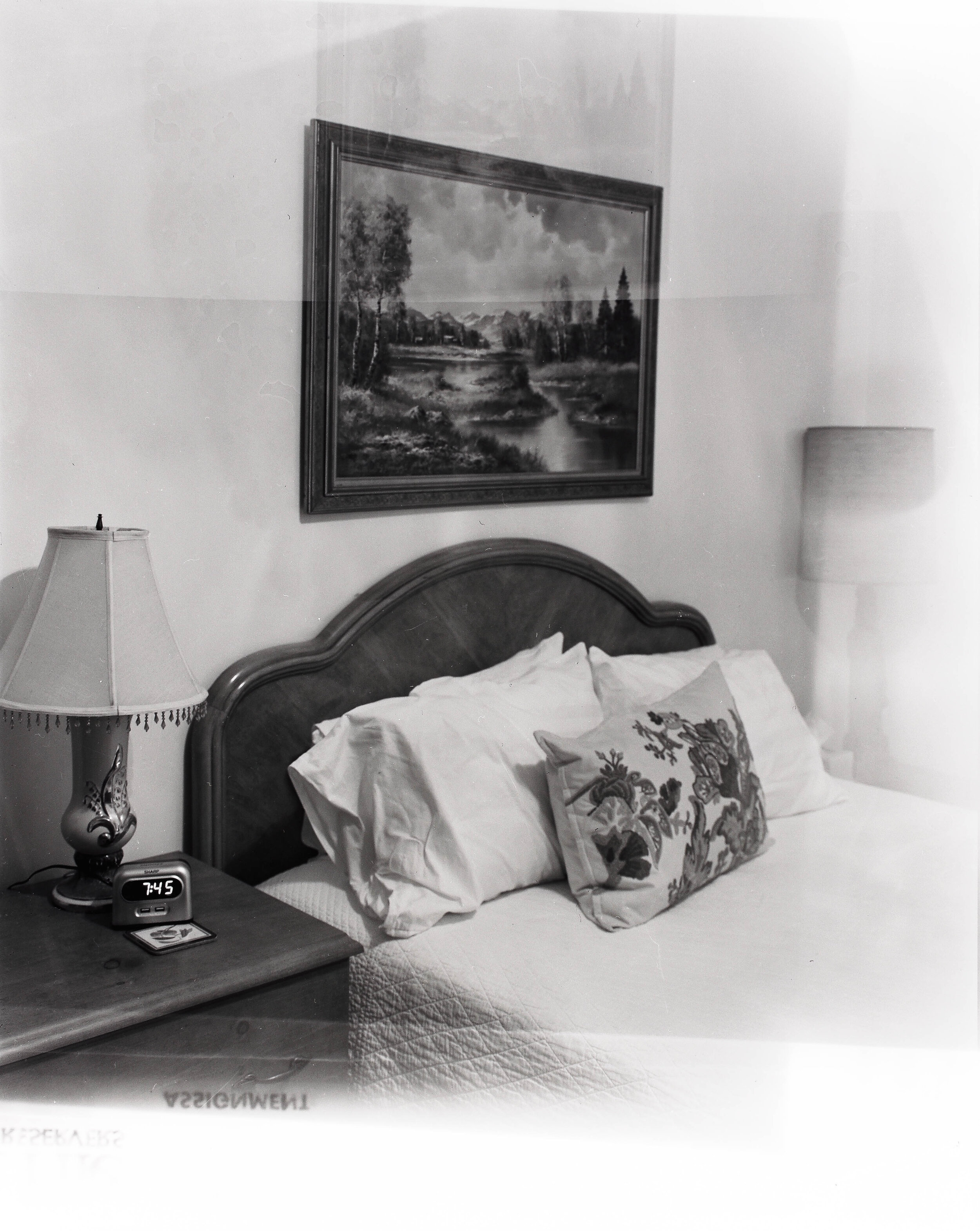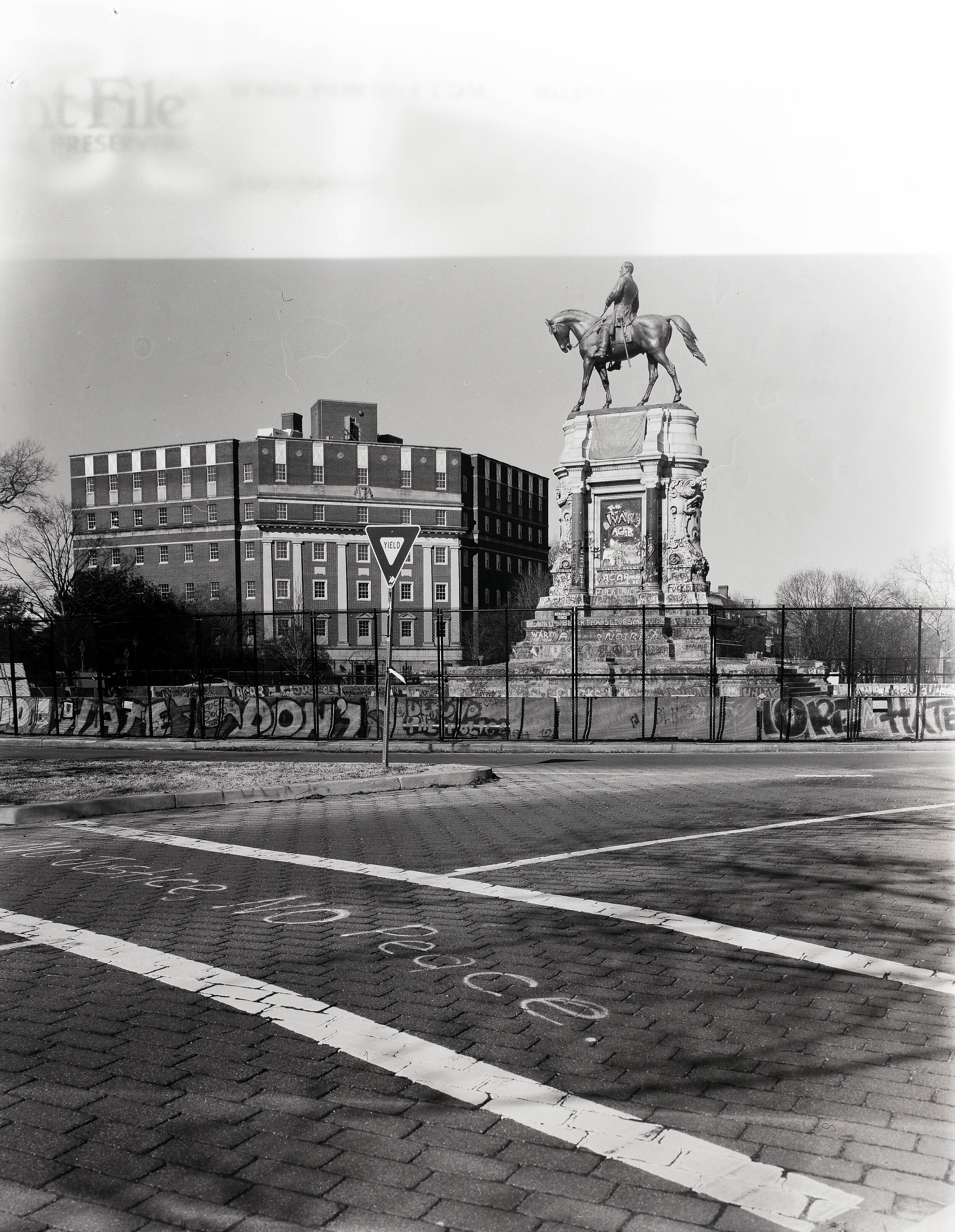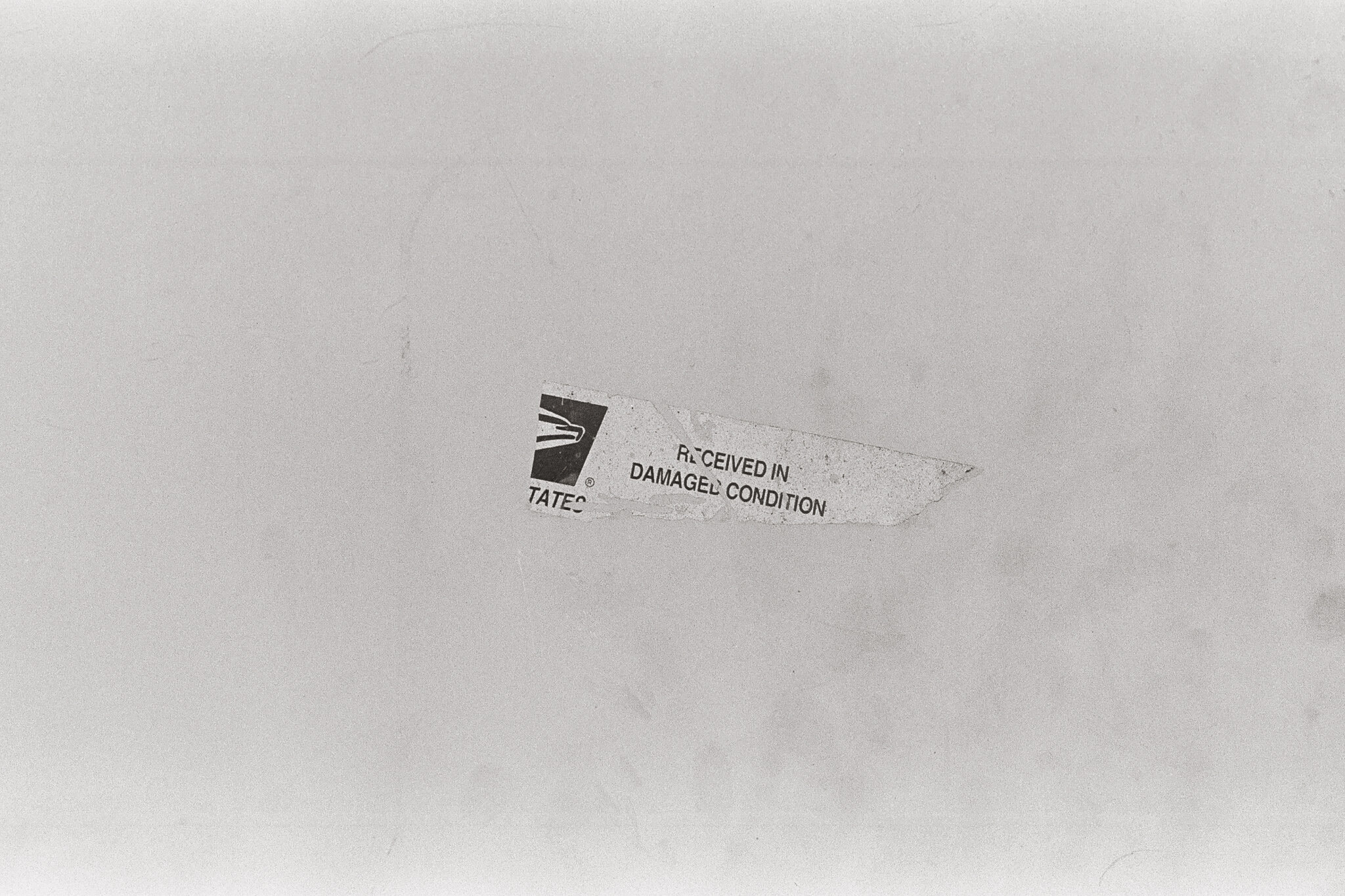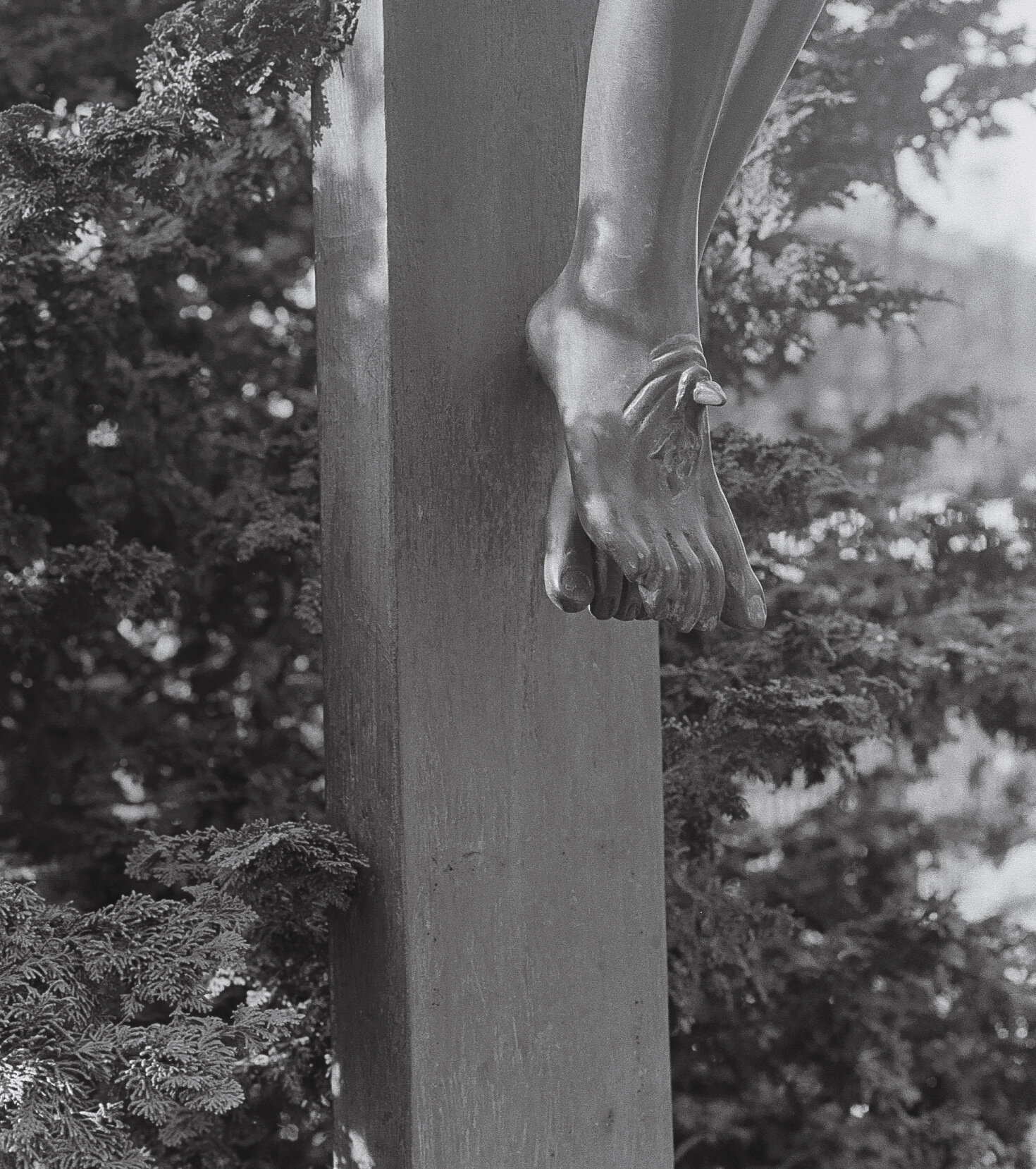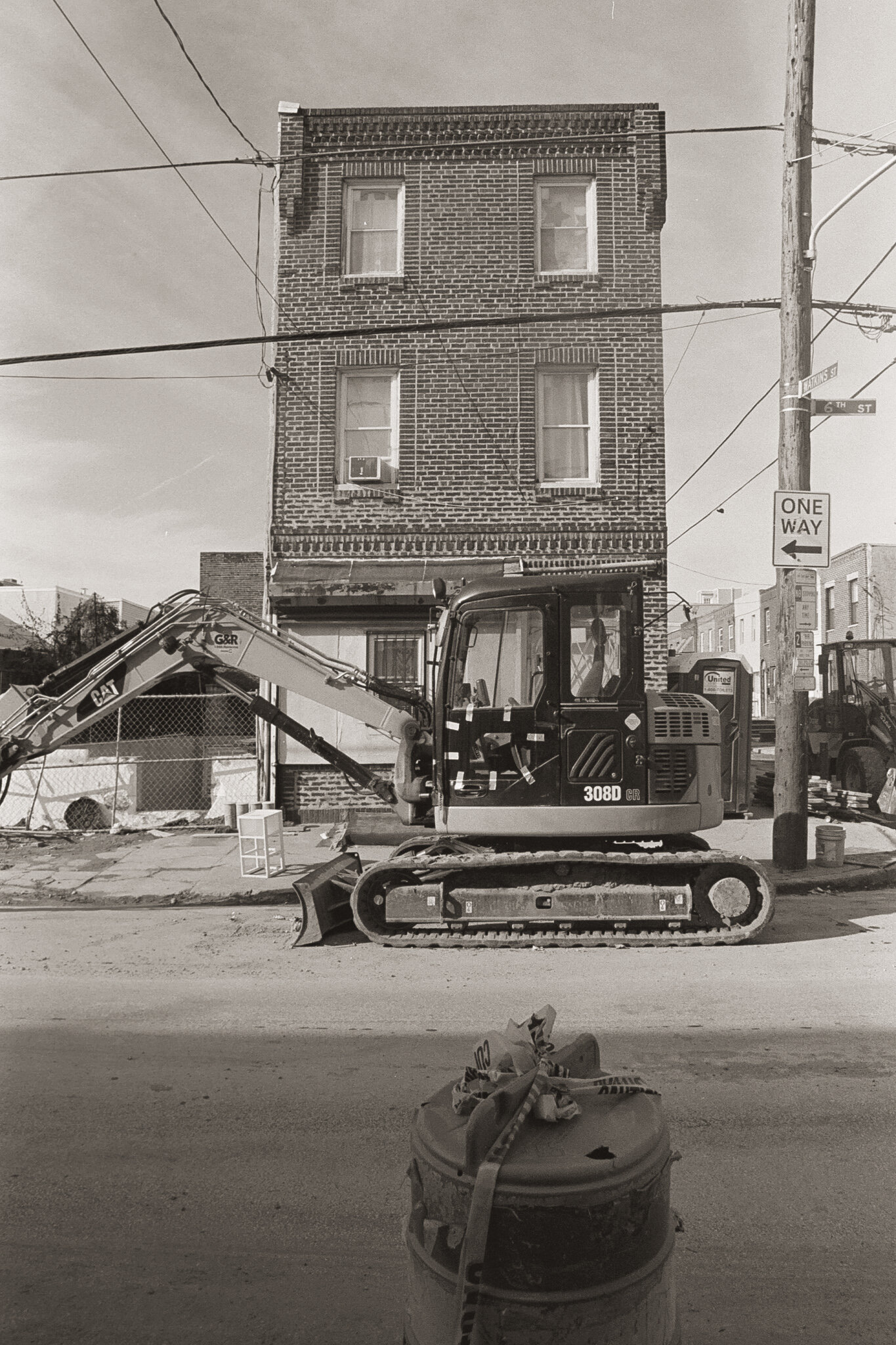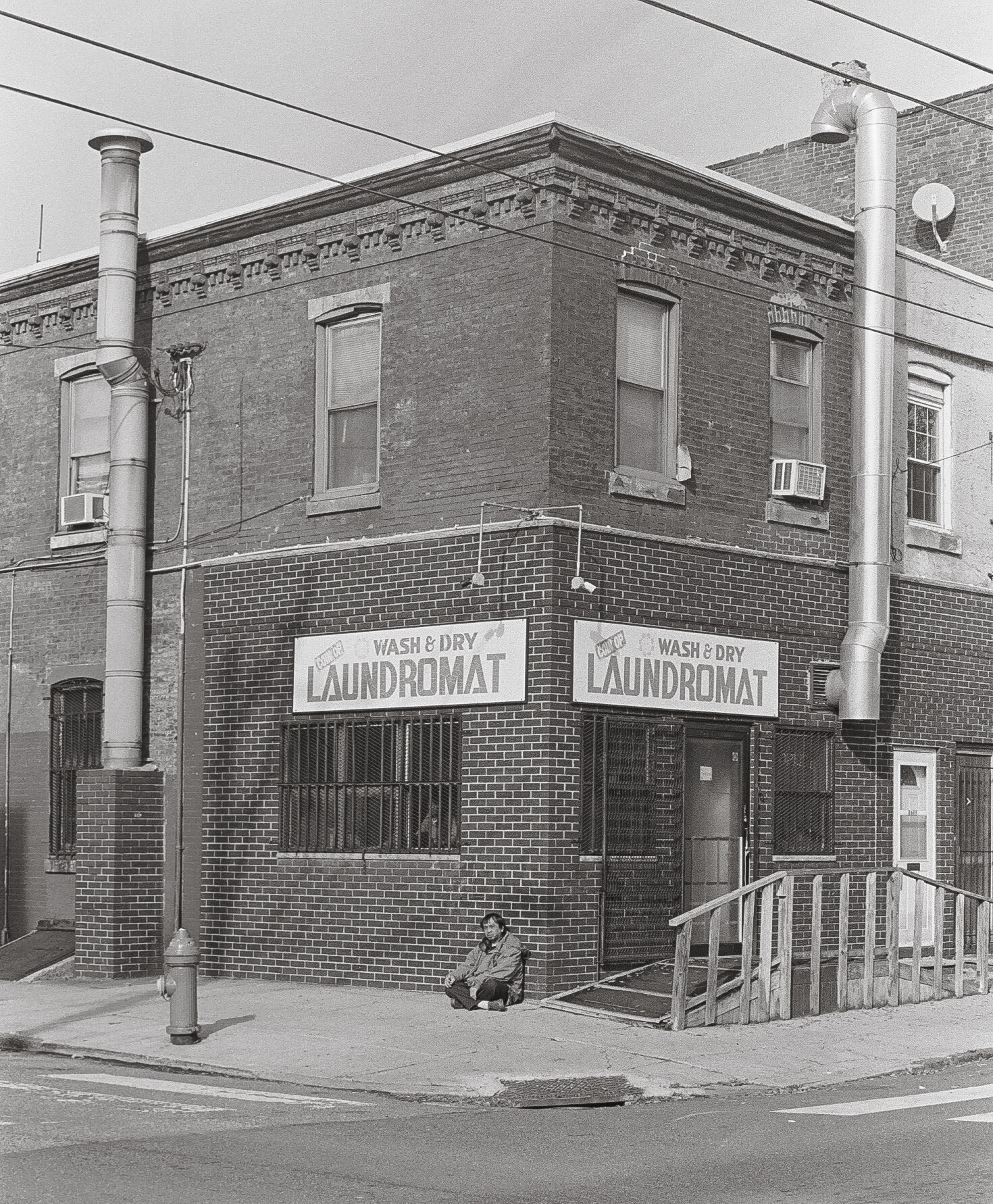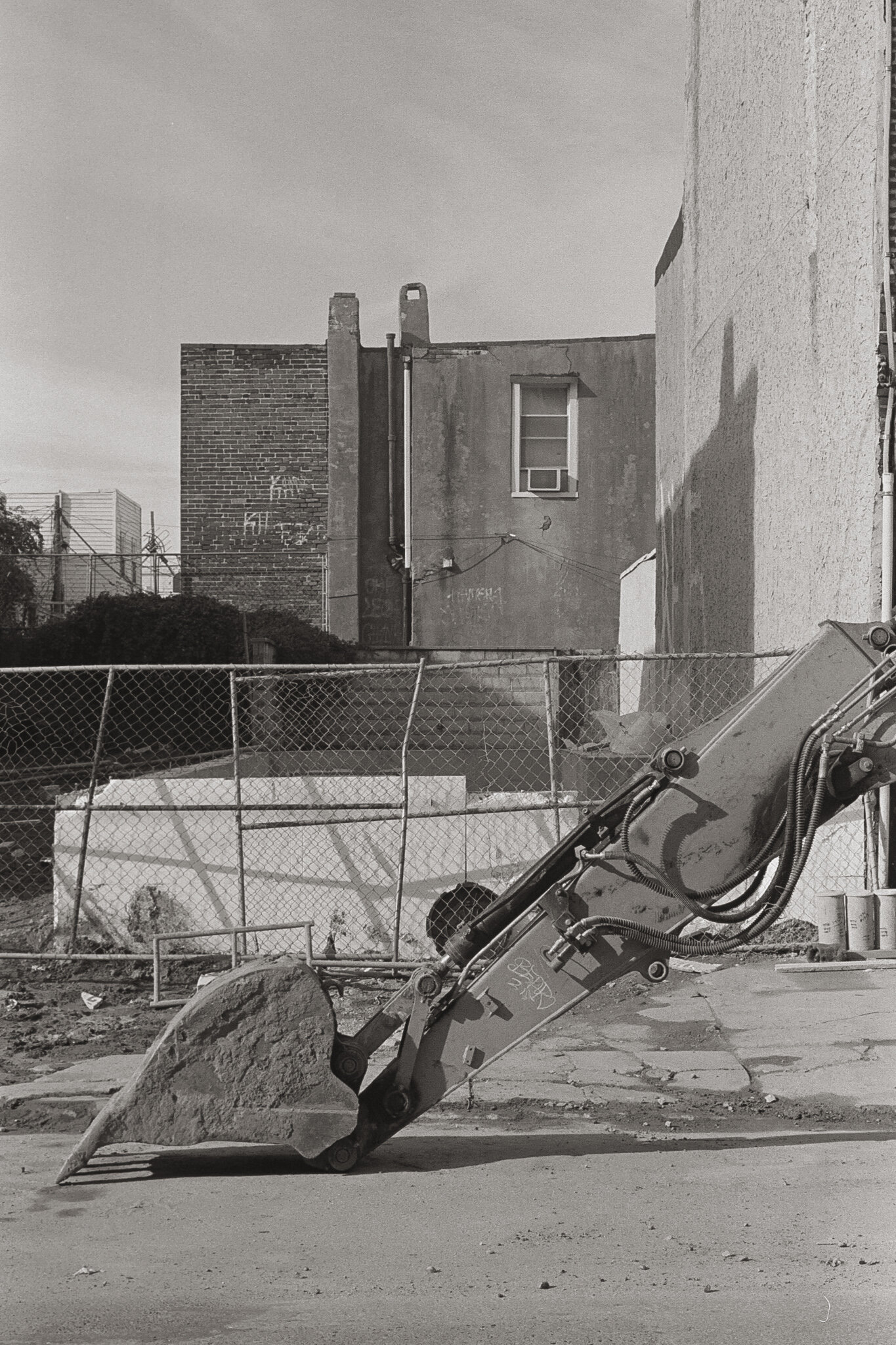Since starting If They Don’t Win It’s a Shame, it’s been my intention to journal the experience of photographing each ballpark. It only took until the fifteenth one to actually do so.
Even now, I’m hesitant. Sharing travel diaries feels like sharing what you ate for dinner on social media. It’s boring and no one cares. On the other hand, this is my newsletter and I’ve gotten better at not caring so…Comerica Park!.
This was my second time photographing Comerica—the first time was in 2018 during my Flickr era, before I even knew what film was. It brings me no joy to share these photos, other than to thank god I got learned about Photography.
Comerica Park has sponsored entry gates. I can’t say I’m surprised, but I don’t recall any other stadium having their frickin’ gates sponsored by grocery stores and insurance companies. This kind of shit is why I’m photographing stadiums! That said, I’m not confident in the photos I made. I’m trying to move away from static images and a picture of a gate with an ad is just that. Yet the security area and metal detectors were too far removed from the gates for a dynamic picture.
Game One had a giveaway and the line was around the block an hour before gates opened—for a hoodie. I was concerned about losing valuable time in the stadium but a security guy let me cut the line. I guess it pays to wear a Nikon vest and carry a camera.
Once inside my first stop was the carousel in the middle of a food court. After spending way too much time photographing kids on the carousel, I walked into the “DTour Band” playing some R&B and funk classics on the concourse. After spending way too much time photographing their performance of “Love Train” and “Car Wash” I headed to the baseball-themed ferris wheel. I wanted to take a ride for some aerial photographs, but the line was too long. After spending way too much time photographing the ferris wheel, I realized I only had 30 minutes or so until first pitch and hadn’t even come close to completing my pre-game checklist.
So I went to the bullpens to photograph kids watching the pitchers warm up. I don’t often go for this shot, but it’s nostalgic for me. I was able to squeeze up close, but the angle was shit. I did get the bullpen coaches with their hands over their hearts for the national anthem.
When the game started I went to the MotorCity Casino Hotel Tiger Club (LOL), where I had a reservation. I didn’t eat but it was a chance to photograph a more exclusive part of the ballpark. I’ve been trying to visualize class, particularly the divide between luxury areas and nose bleeds, and regular access areas versus private access areas—and failing miserably. I think I failed again despite having rare access to such an area. Very few people were in the club, so it was obvious I was photographing them. The ceilings were too high to bounce flash and the glass windows would have ruined any direct flash. The food also looked bad.
At this point the game was already in the second or third inning and I hadn’t even explored any real seating areas, which I normally would have done twice over by this point. I tried meandering through the upper deck, but it was crowded and after only twenty minutes I had to head to the lower level, because the game was halfway over.
I stayed in the lower level for the rest of the game. I can’t say exactly what I shot because it was a blur. The game was over in two hours and four minutes. The time from gates opening until first pitch was an hour and forty minutes. This is Biden’s America.
It’s rare I complete a shot list for a game or stadium. Scenes won’t materialize or the image in my head is better than the image in real life. This was the first time I couldn’t complete a shot list because I simply didn’t have the time to photograph everything.
Thank god I whined about it on social media because I was rewarded a three-plus hour game on Sunday—more than enough time to run through the shot list. I started the day back at the carousel, for Chevy (LOL) Kids Sunday, where there was a lady on stilts and face painting for the kids. After this, I scoped out the upper deck for photos to take once the game began and people were in the seats. I ran into a guy reading a book, shoeless. I tried to grab a photo but, of course, the entire section was empty except for a family sitting right behind him, making a good composition near impossible as they burned me with ice-cold stares.
Back on the first level, I went down towards the field to get kids asking for autographs. I want to incorporate the netting that surrounds the field as a way to remark on the environment. Kids asking players for an autograph seems like a subtle way to do so. I was literally seconds late—a player was walking away from signing as I arrived. The scene and light were perfect.
I tried photographing the Tiger Club again and with the same results. When leaving, I realized I could access the suite level so I tried sneaking around but was too scared to actually walk into a random suite. Although I adopt street photography methods to make this work, I am one of the biggest cowards in the game. For every good picture made, there are 10 better ones I didn’t take because my heart was beating and my mind was role playing the consequences.
Circling back to the upper deck I ran into the mascot who was getting ready to do a between-inning video thing. A baby started crying while their picture was taken with “Paws” and I was too slow on the shutter. Again, I’m a coward. I didn’t want the parents to be upset with me.
On the other side of the upper deck, I found an array of surveillance cameras which I photographed, but I really hated the compositions. They were in just enough of a weird spot where there was too much empty space in the frame and I couldn’t add any dynamic element to enhance the image.
Towards the end of the game I ran into kids dressed in army fatigue pants. They are part of the Michigan Youth Challenge Academy, which according to their website, is an organization that “educates, trains, and mentors at-risk youth in a quasi-military environment at no cost to participants, giving young people the skills to become productive and responsible citizens.” These photos should have been like shooting fish in a barrel. Kids! In military costume! At the ballgame! This is the heart of the project!
Admittedly, I was intimidated by the teens. The scene itself wasn’t very photographic, other than it being teenagers dressed in army attire at a baseball game. But I didn’t make the scene happen. Instead I creepily walked in circles around them hoping an opportunity would occur. Moments like this happen way too often and why I still don’t feel comfortable calling myself a photographer. You think Winogrand would have frozen? If you’re gonna be a creep you might as well get the shot, not regret.
I even had a chance at redemption after the game when I ran into the group outside the gate. They were getting lined up and doing weird army yelling and looking stern. However, I only had two frames left on the roll and tried to be super intentful with these last couple shots—to the point I missed good moments and had to just fire away when they finally left. The thing is, I had my Ricoh with me. This is a Film Project, but there’s no reason I couldn’t have killed the roll and then gone wild with the digicam. SMDH.
My other missed shot this game was a kid on a leash. Again, I was looking for a perfect shot and scared of people confronting me for taking a photo of strangers. After following this father-son duo around for an obvious amount of time, I had to jump ship. If there’s a theme to my work, it’s that I’m petrified and miss 100% of the shots I don’t take!
Despite my numerous fuck-ups, I was happy with the day and had a roll to spare, so I sat in the left field seats to end the game. Behind me was a Canadian Little League team—the kids were being kids and a dad was heckling every player and doing stomach rolls. The Tigers gave up five runs to blow a lead, to the delight of the Canadian team. They then tied it in the bottom eighth and hit a walkoff home run in the ninth—my first walkoff home run. I was slow to react to fans celebrating the moment, but did, fingers crossed, get a decent shot of two very sad Blue Jays fans.
After a moderate amount of deliberation, I’m placing Comerica Park at #6 in my ballpark rankings, behind Oriole Park at Camden Yards and ahead of the Oakland Coliseum. The park itself is beautiful, with great sightlines, unique vantage points, and a fantastic view of downtown Detroit. Now, I’m a stadium purist—there should only be plain seats (I.E. no luxury seating) and the only concessions should be for hot dogs and ice cream. That said, if you have children the carousel and ferris wheel make Comerica one of the more kid friendly parks I’ve been to. If your kids make you drink, there are more breweries and beer halls than any other park—including an entire outdoor patio deck where adults can pay a lot of money to drink and watch very little baseball.
An important part of my rankings are the hot dogs and ice cream. The hot dog was mid. It came with onion, mustard, and ketchup, and looked raw. Somehow, it tasted okay. The ice cream though. Wow. I’m still thinking about it. For “just” $8 you get three three giant scoops of hard serve. I had vanilla and mint chocolate chip—the chips were chunky as hell with some kind of chocolate swirl mixed in. And the helmet was the actual team helmet—I’m looking at you Mets and Nationals.
A bonus for Comerica Park—security was chill AF. I mean, a security dude let me skip the line and the camera with flash was a non-issue. I sweat bullets going through security and am dreading the day the camera isn’t let in despite it being allowed by every team’s camera policy. The person working gate security for Game Two was surprised I even bothered to show them my film and camera. Ushers never checked tickets for their section—I could have sat behind the dugout with no problem. Chill security is a confidence boost because I feel like I have free reign over the ballpark. When dealing with skeptical security, I tend to look over my shoulder and am not fully focused on making photographs.
Oh yeah—there’s a Mickey Mouse statue on display. Apparently MLB gifted every team one from a previous All-Star Game.
As for Detroit. I wish I could have explored the city but I’m making this project happen with money I don’t have. I don’t even know how I’m going to pay the lab to develop and scan this film. I flew in on a Friday night and flew out on Sunday after the second game. Both games were matinees, so on Saturday evening I had time to walk downtown and along the riverwalk. Damn, Philly could never.
I had Detroit pizza from a highly rated place. It was ok. I had chicken shawarma from a highly rated place in Dearborn. It was ok.
And that’s how I spent Memorial Day Weekend. Respect to Union soldiers and WWII vets only.
















